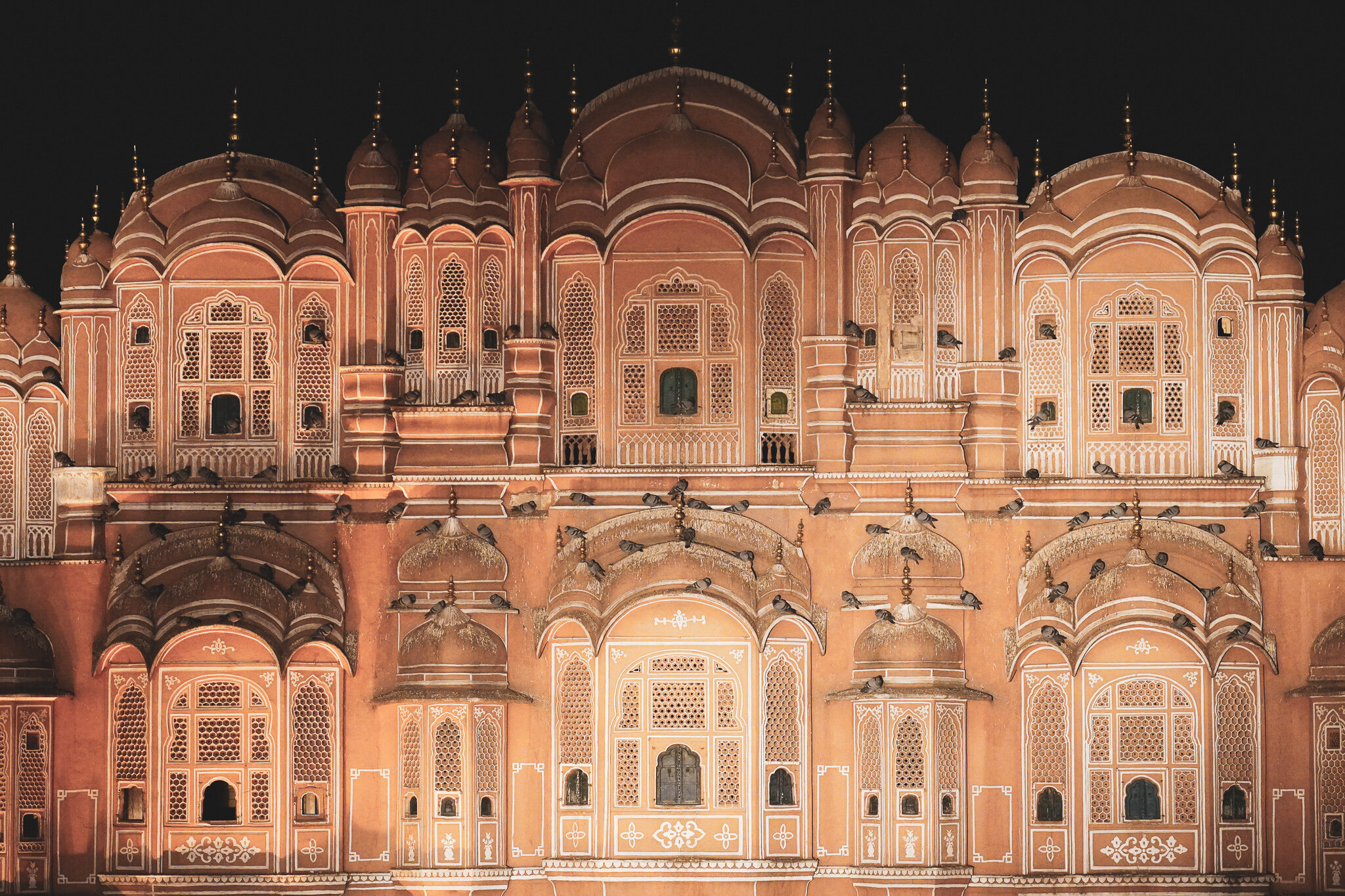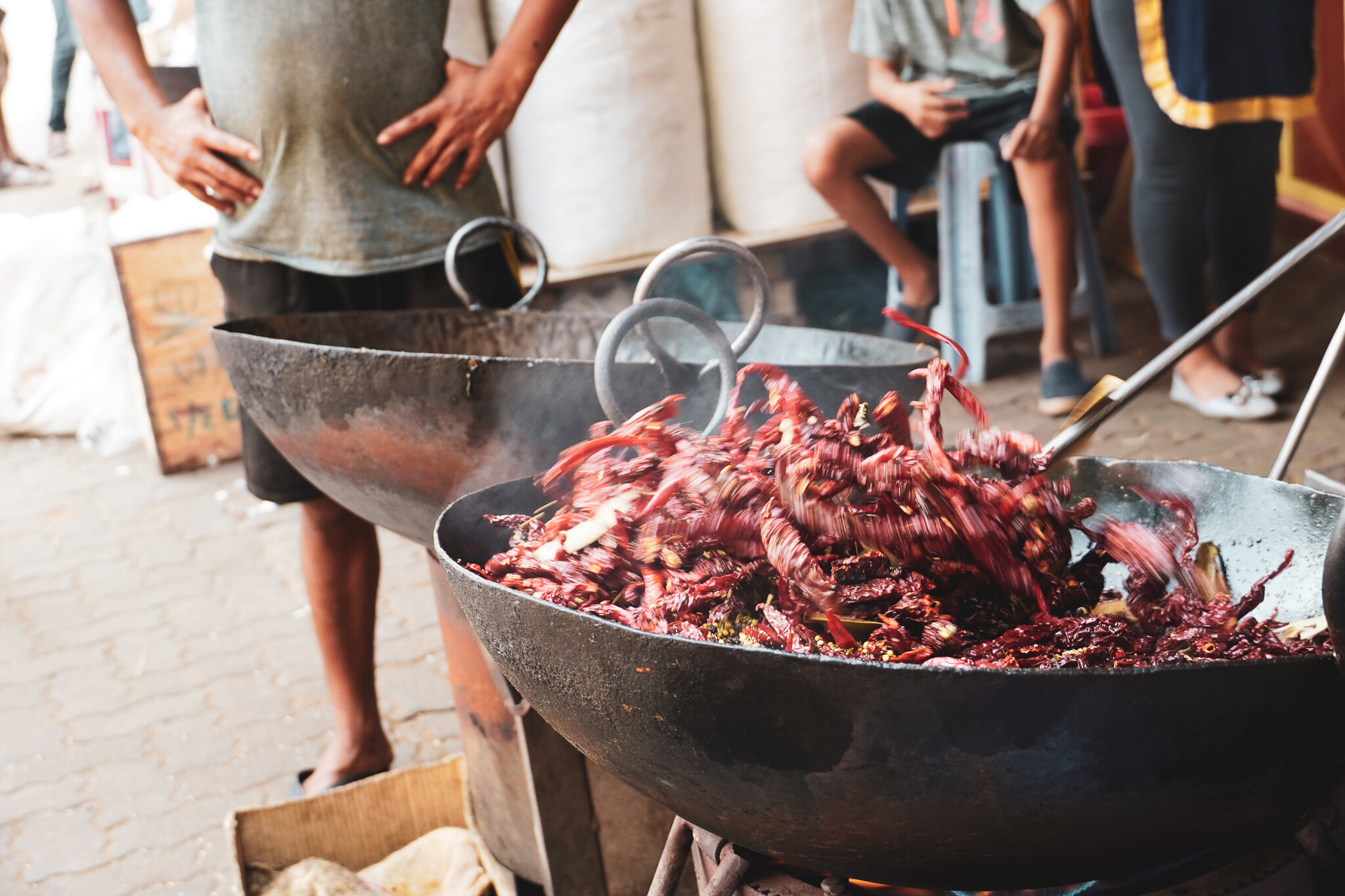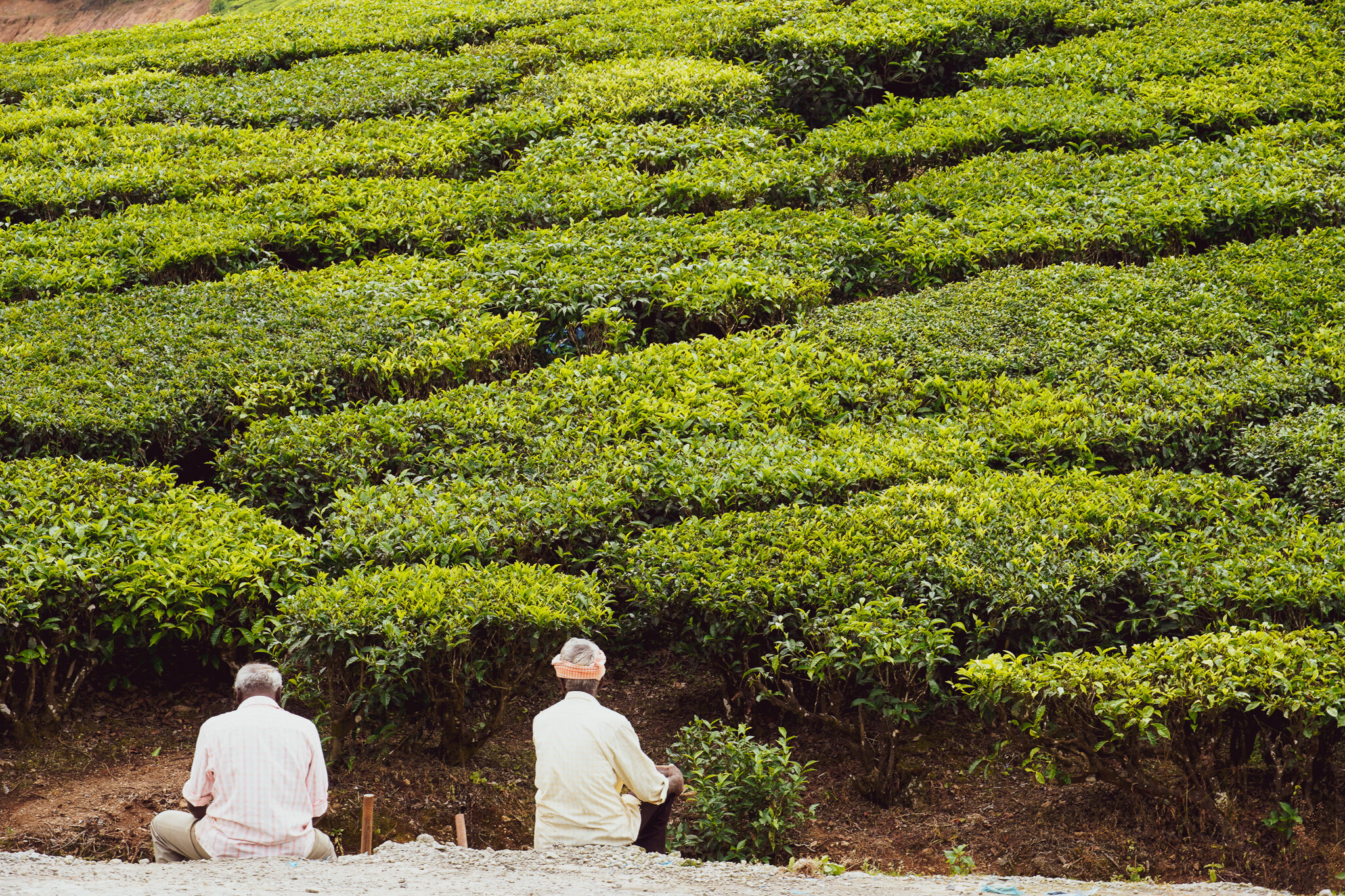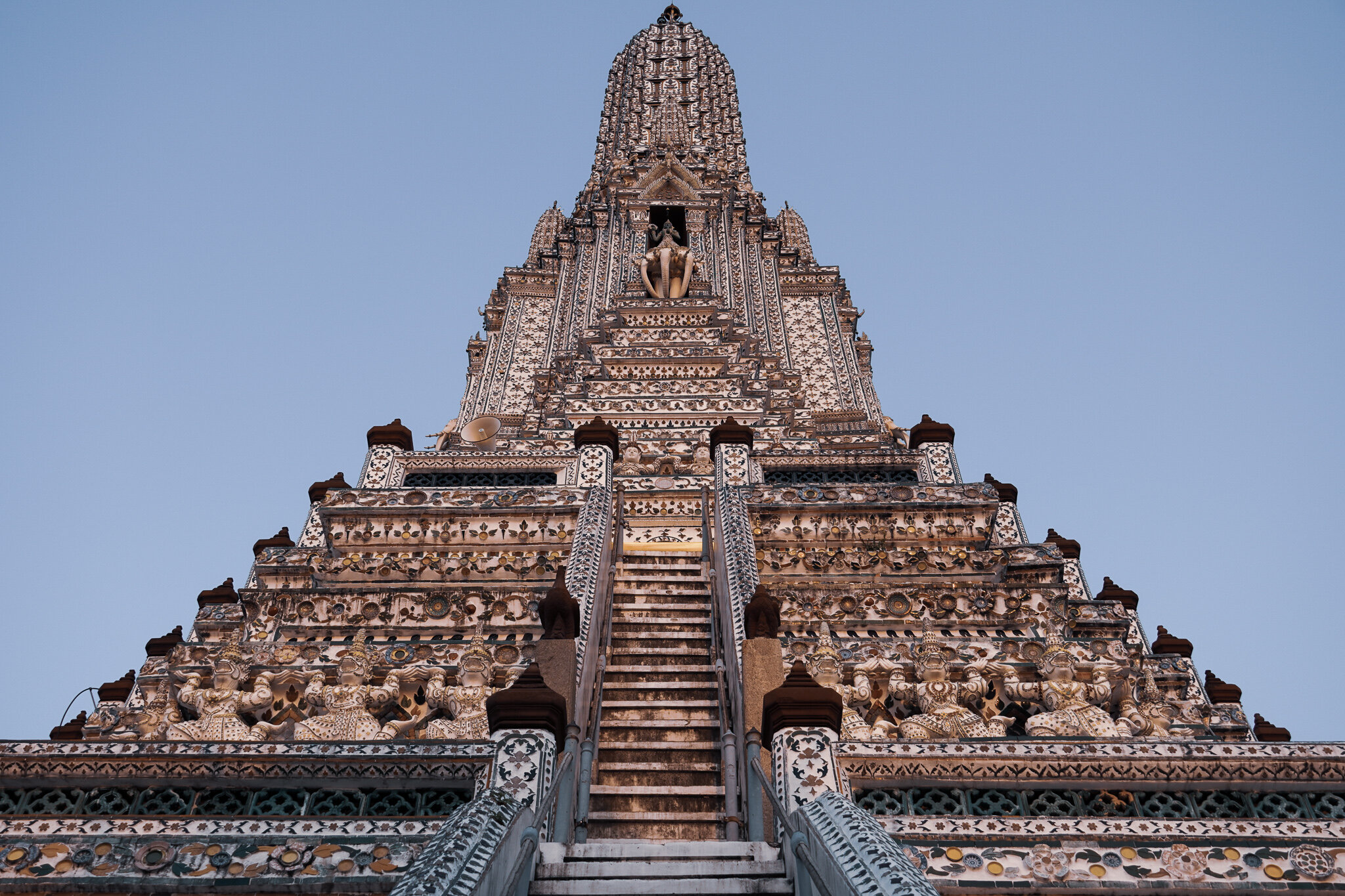India Part 1: Agra, Jaipur & Udaipur
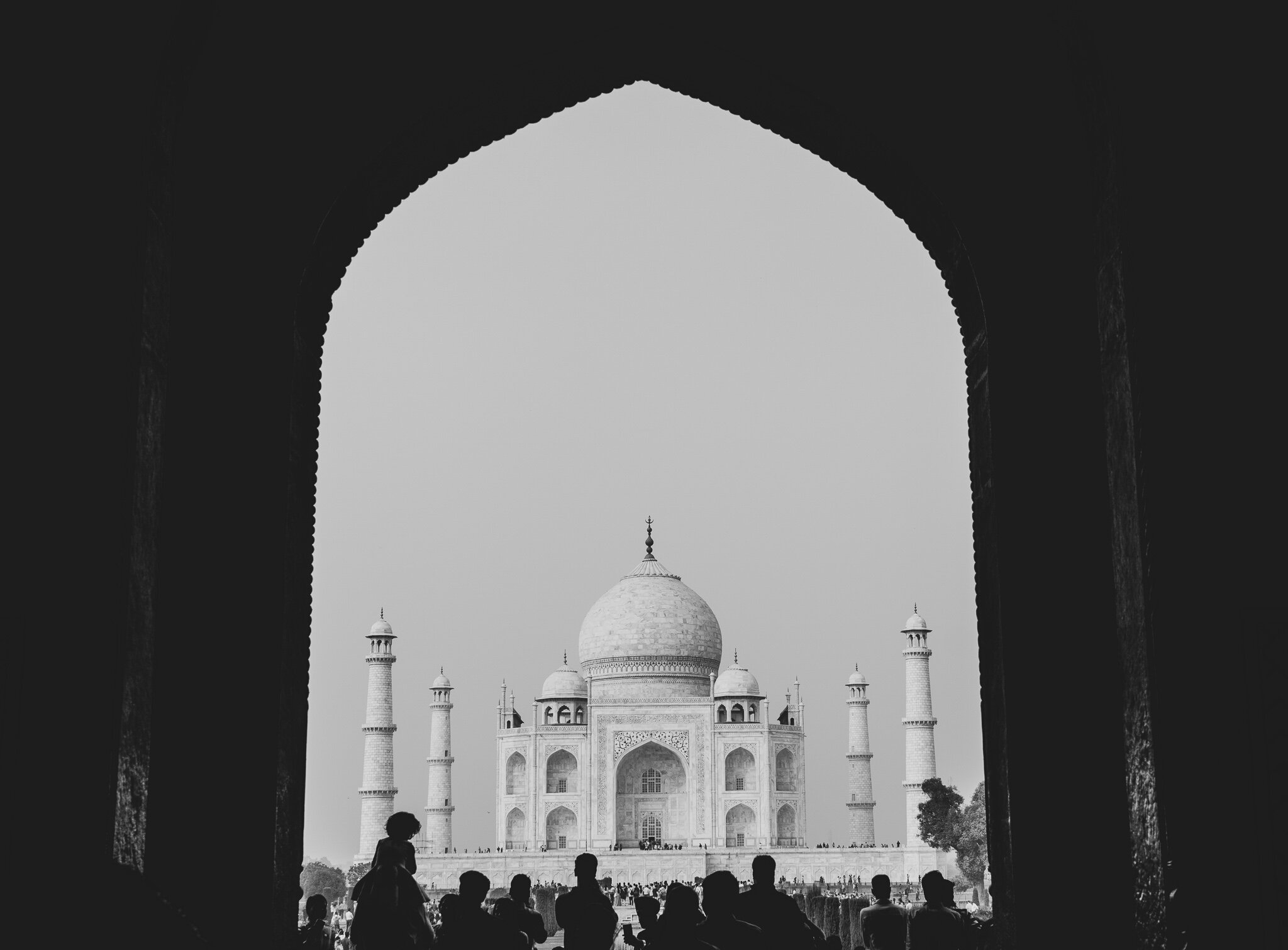
India was everything we hoped for. Great food combined with beautiful iconic buildings set amongst typically chaotic roads left a lasting impression. We loved the places we saw (although we definitely had some favourite cities too).
Here’s our guide to visiting the most incredible sites in India, excluding Delhi (the pollution is especially bad in November so we decided to skip the city for this trip). We started off with the rest of the Golden Triangle (Agra and Jaipur), then Udaipur, Mumbai and Kerala. We’ve split our guide up into three separate posts so stay tuned!
Day 1: Agra (1 night)
Try to get a flight to arrive into Delhi in the morning as the drive to Agra is about 4 hours and you’ll want to make sure you get into the Taj gates at least before 3pm.
Note: if you’ve booked with a tour company, they may have indicated that you’d see the Taj Mahal twice, once on arrival in the late afternoon, and again the next morning for sunrise. It will only be worth going during sunrise if you’ve gone to Agra in the summer months. If you’ve gone during November-February, it will be very foggy and photos will be disappointing.
Once you’ve met your driver, if you’re like us, you’ll probably be super hungry so make sure to tell the driver to make a stop early on (before the lunch rest stop). We aren’t sure exactly which service spot we went to but it had the best chai in a clay cup (known as kullhad). These types of cups are typically only seen in Rajasthan.
Upon arrival in Agra, your driver might push you to go straight to the Taj (essentially so he can finish his day early). If you want to freshen up (you’ve just flown who knows how many hours and driven another 4 to get there!), then make sure he takes you to the hotel to check-in (you’ll likely be staying within 10 minutes from the site anyway) and get ready for, let’s be honest, a photoshoot at one of the great Wonders of the World.
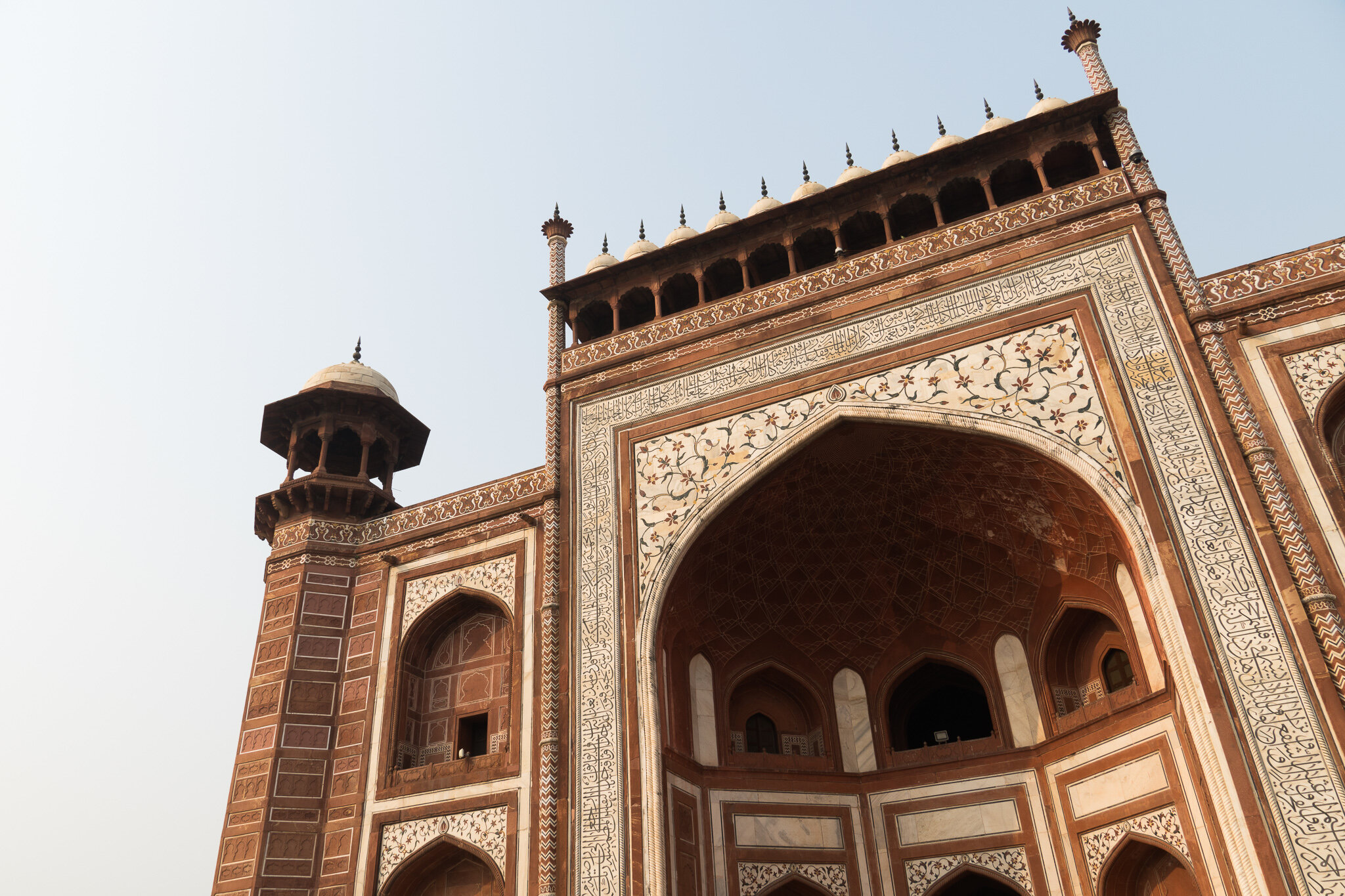
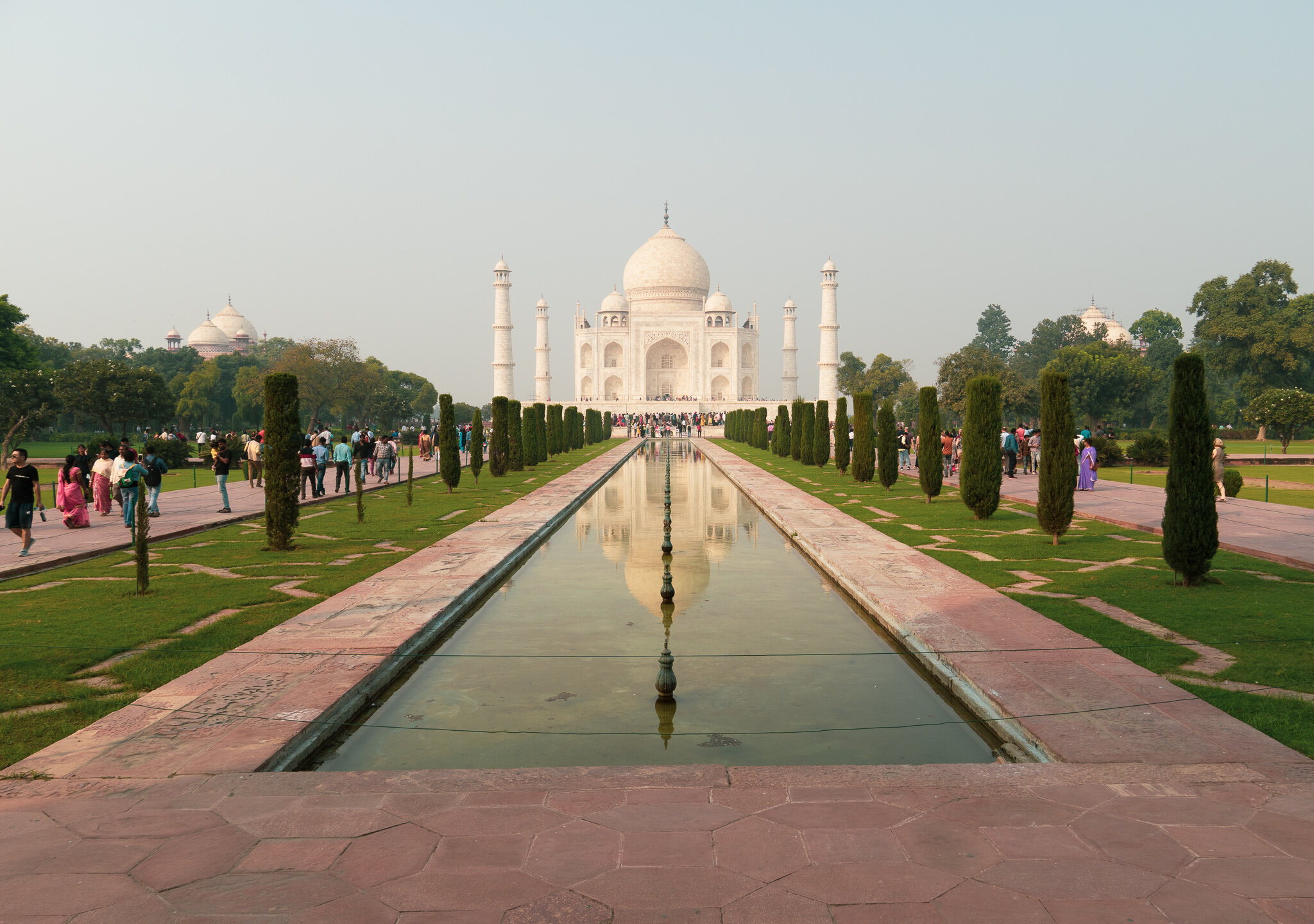
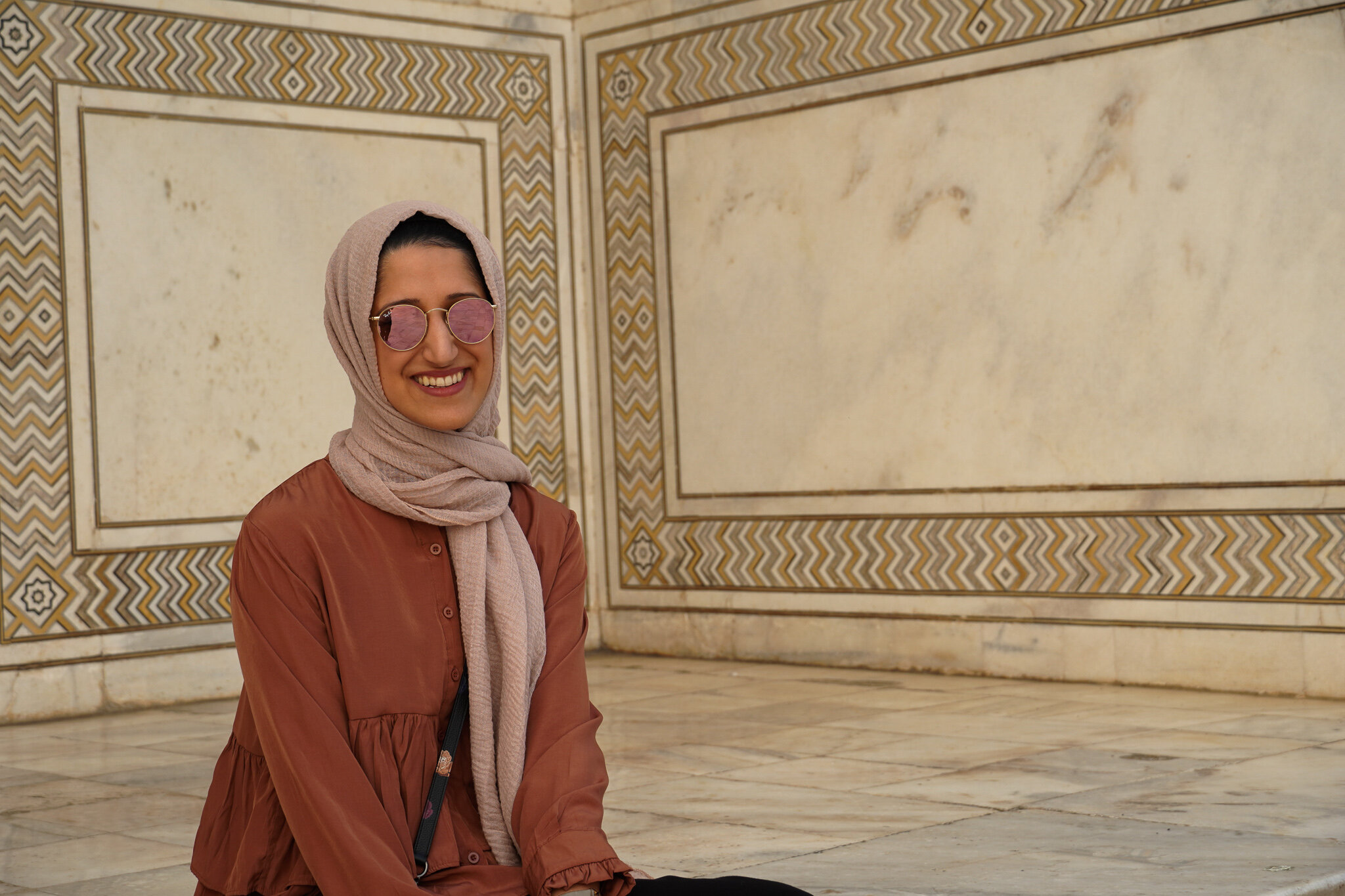


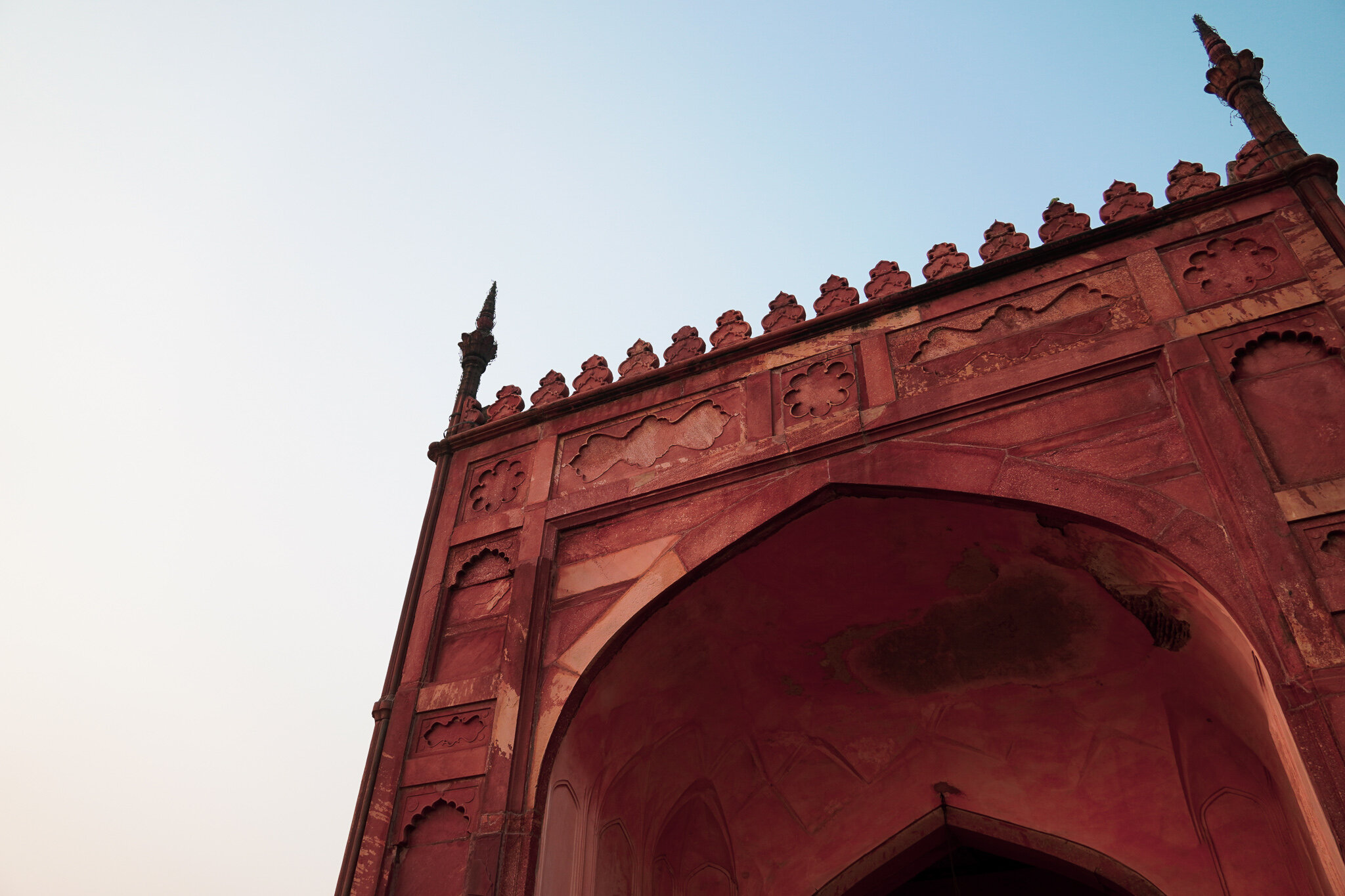


The Taj Mahal was commissioned by Shah Jehan as a memorial for his wife, Mumtaz Mahal. Both their tombs are within the centrepiece - the mausoleum - this sits between a mosque and a guest house, on the edge of the Yamuna River. The architecture is typical Mughul style and the main mausoleum took 11 years to complete, while the rest of the complex took another 10.
Make sure to take in the view of the Taj Mahal through the main entrance archway - it really is an incredible first sight! Take time to explore the huge gardens and fountains while your guide gives you the historical fascinating facts and be sure to look out for the changing colour of the marble as sunset hits.
Opens 30mins before sunrise and closes 30mins before sunset. Closed on Fridays
1100Rs for foreigner adults and 200Rs for the mausoleum entrance, and you can pay by card. Tickets also include a free water bottle
Spend 1.5 hours here
Note: You can buy tickets in advance online and save 50Rs. You’ll also be bombarded with lots of people asking if you want photos taken (and printed as an album), but your guide will generally be happy to take photos on your own camera if you ask!
Next, walk back to the car and drive a few minutes to the entrance of the Agra Fort - the home of the Mughal dynasty until 1638. It also sits along the Yamuna River and you can actually see the Taj Mahal from the edge of the fort in Musamman Burj. It was initially designed as a military fort with huge empowering walls. When Shah Jehan reigned, he added white marble palaces (similar to the Taj Mahal) and then when his son was in power, he further expanded the fort by adding a second layer of walls.
There’s a huge mix of Islamic, Persian, Hindu and Moghul styles and a lot to see even though the public is only able to access a small percentage of the fort. The main structures to go to are: Khas Mahal, Musamman Burj, Jehangir’s Palace, Diwan-I-Khas and Diwan-I-Aam. Don’t forget to test out the echo wall
Open from sunrise to sunset
550Rs for adults
Spend 1.5 hours
For dinner, do not go to Kesar. There are mice inside the restaurant and the staff don’t seem to mind. We left when we saw them and went to Pinch of Spice, which was pretty good but nothing special. The portions are big though, so be wary of over-ordering.
Day 2-3: Jaipur (2 nights)
If going in summer months, visit the Taj Mahal again for sunrise then head to Jaipur at around 9am - the drive is about 5 hours (inclusive of lunch break).
On your way to Jaipur take a slight detour by stopping at Chand Baori, a huge stepwell built over a thousand years ago to provide water all year round. It sits in a small village called Abhaneri about 2.5 hours from Jaipur. It’s India’s largest one at 13 floors deep and 3500 steps. Just across the road, there is also a small temple that you can visit for free.
8am - 6pm
200Rs for adults
Spend 30 minutes
Note: Although you might have seen people take photos while standing on the steps, they stopped allowing people to go into the stepwell recently. There's a fence stopping anyone from going down. We know, frustrating right?
Jaipur is known as the pink city. This is because in 1853 Sawai Ram Singh ordered all the royal buildings to be painted in a pink colour in welcome of the visit of the Prince of Wales at the time. To date, this colour still brings a vibrancy to the city and is enhanced by the brilliant coloured fabrics splashed around the shops.
After checking in to your hotel, ask your driver to drop you off in the city walls near Johri Bazar. Spend a couple of hours getting lost in the alleyways and browse through colourful fashion and jewellery shops. Be sure to stop for some chai, lassi (these will also be in clay cups) and rasmalai, and embrace the chaos. The roads get really busy and you need to be ready to weave around tuktuks, motorbikes and cars.
Note: Lassi is a local specialty (made with buffalo curd here). The place we found was 30Rs each and delicious, and the shop next door served fresh rasmalai. We’re drooling just thinking about how good it was.
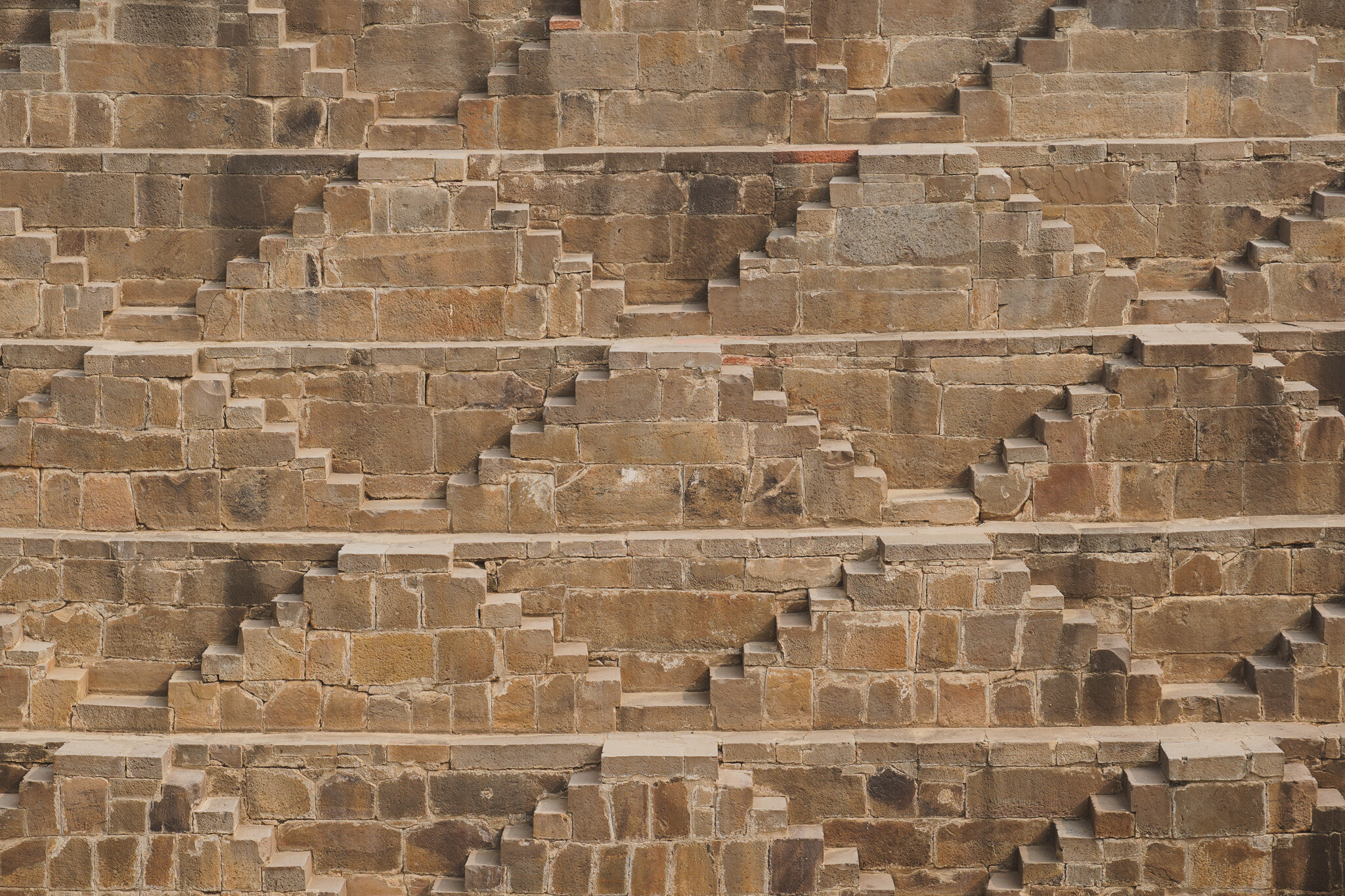
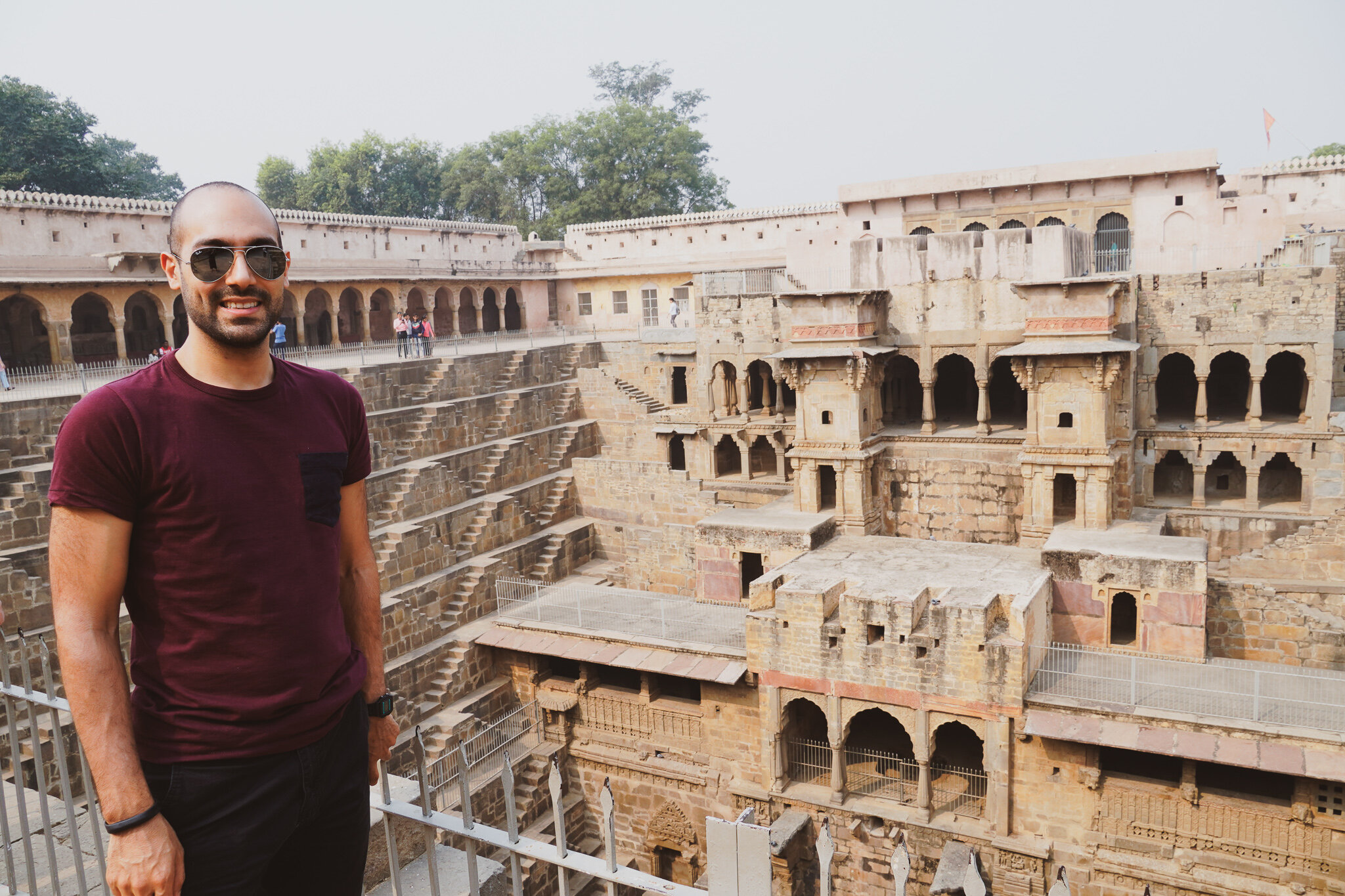
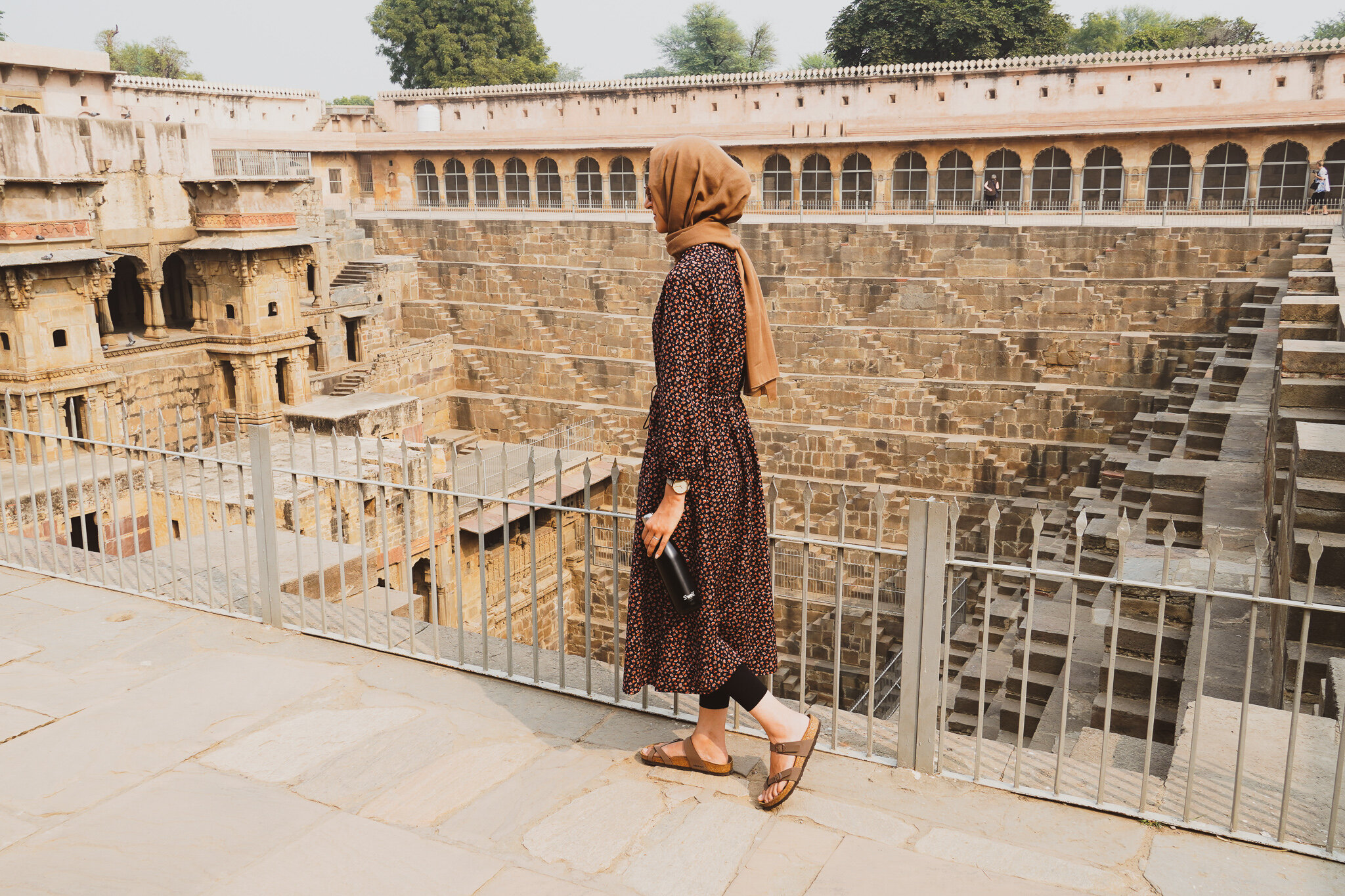

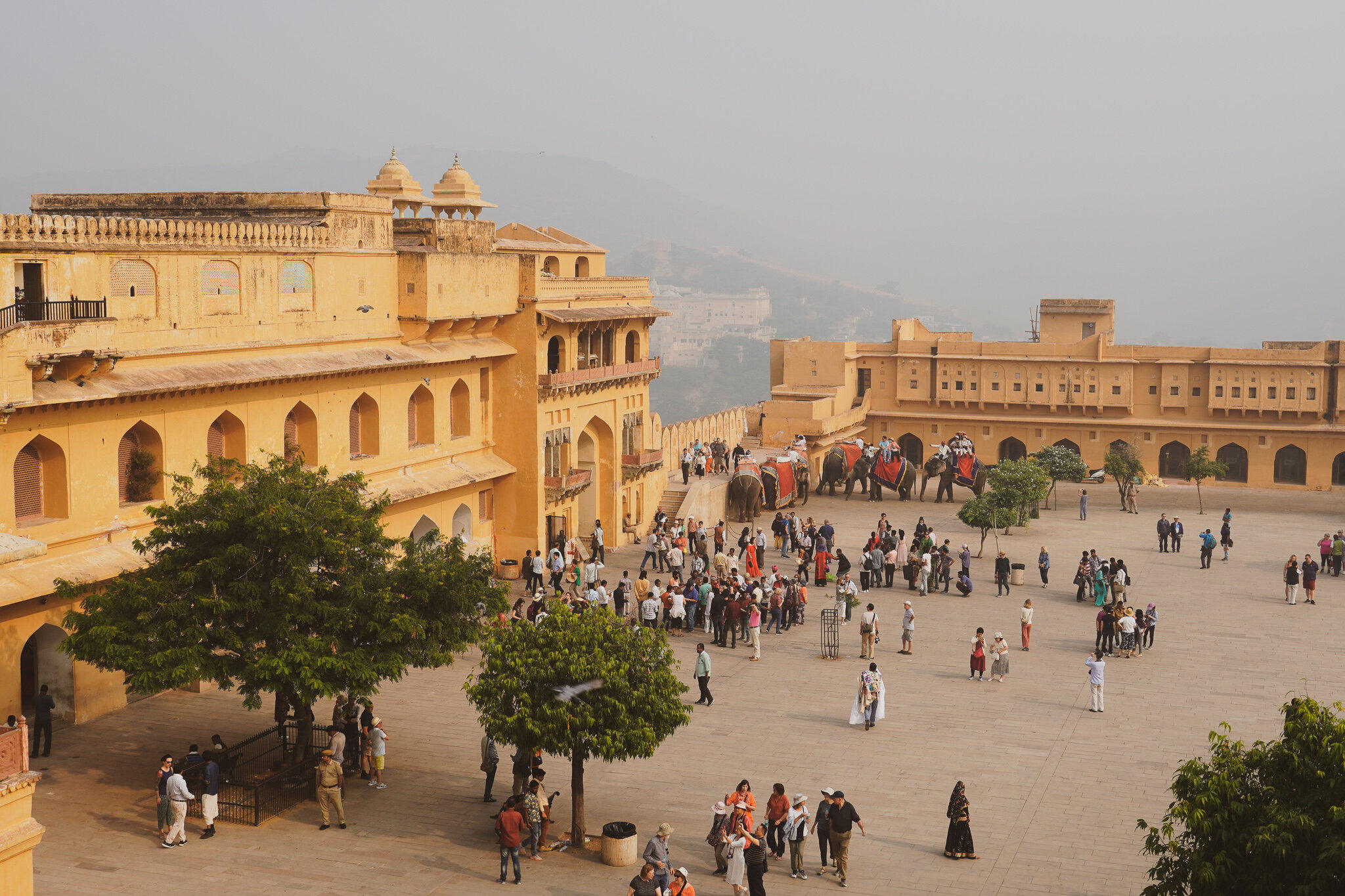
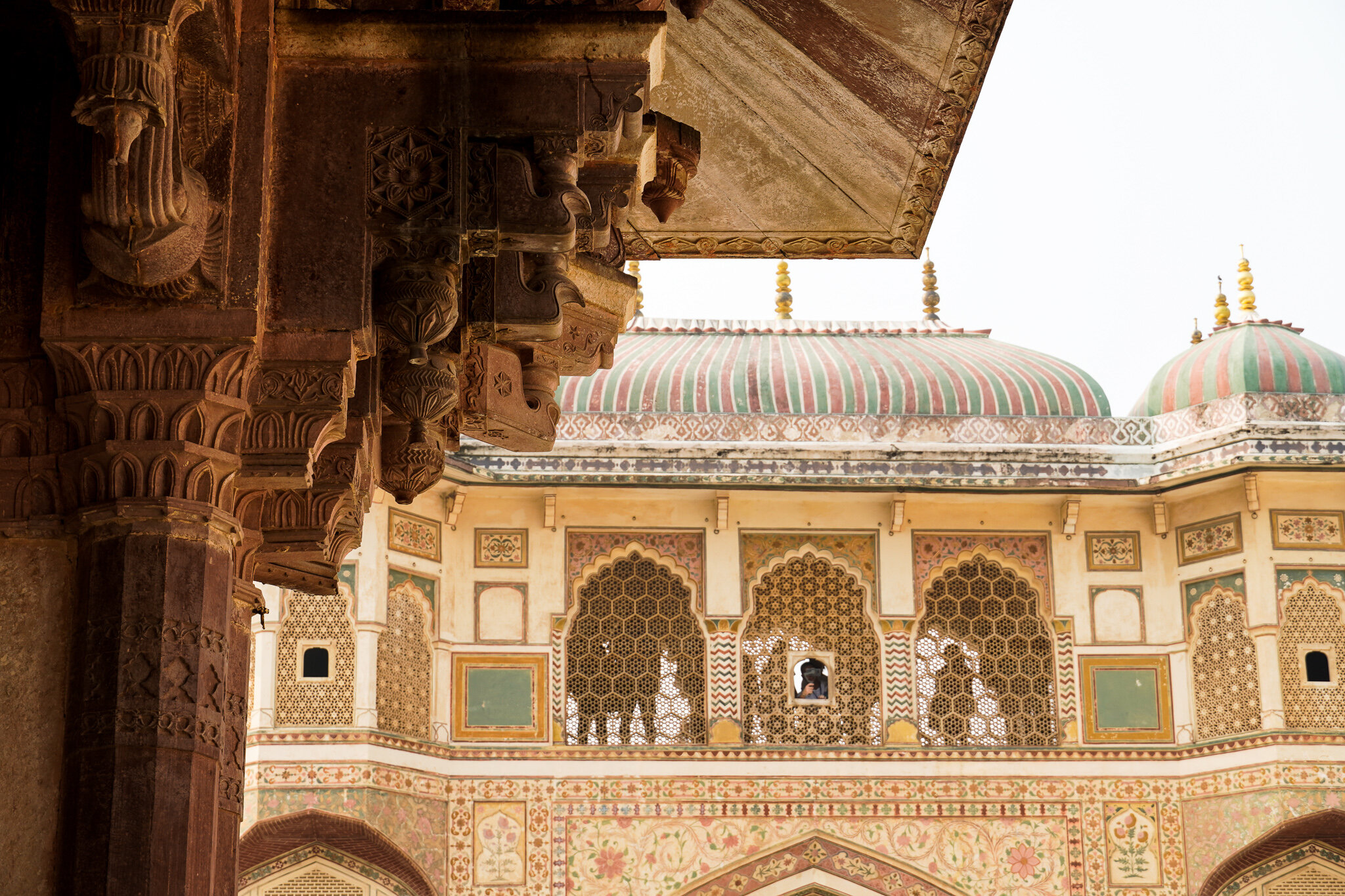

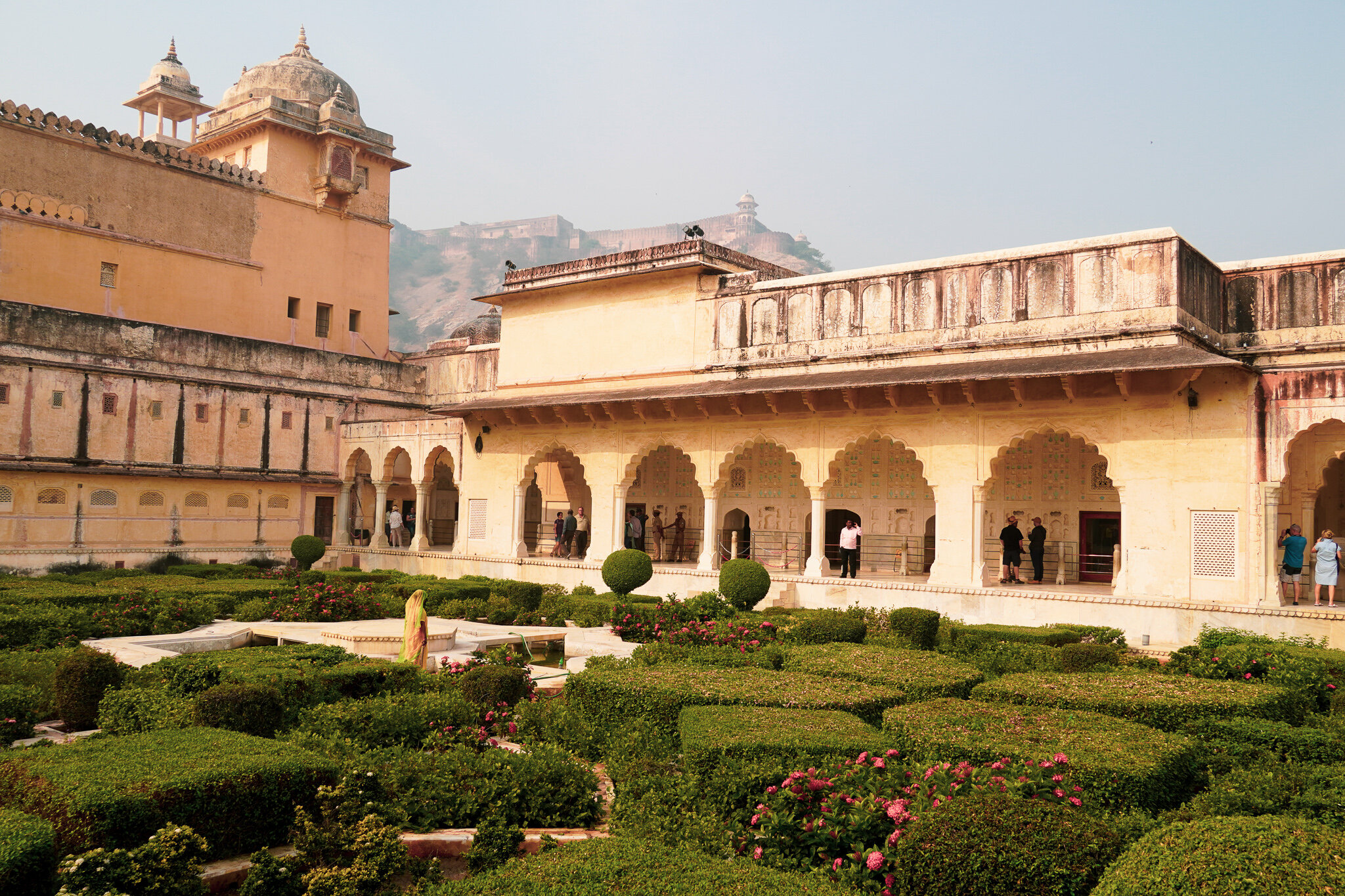


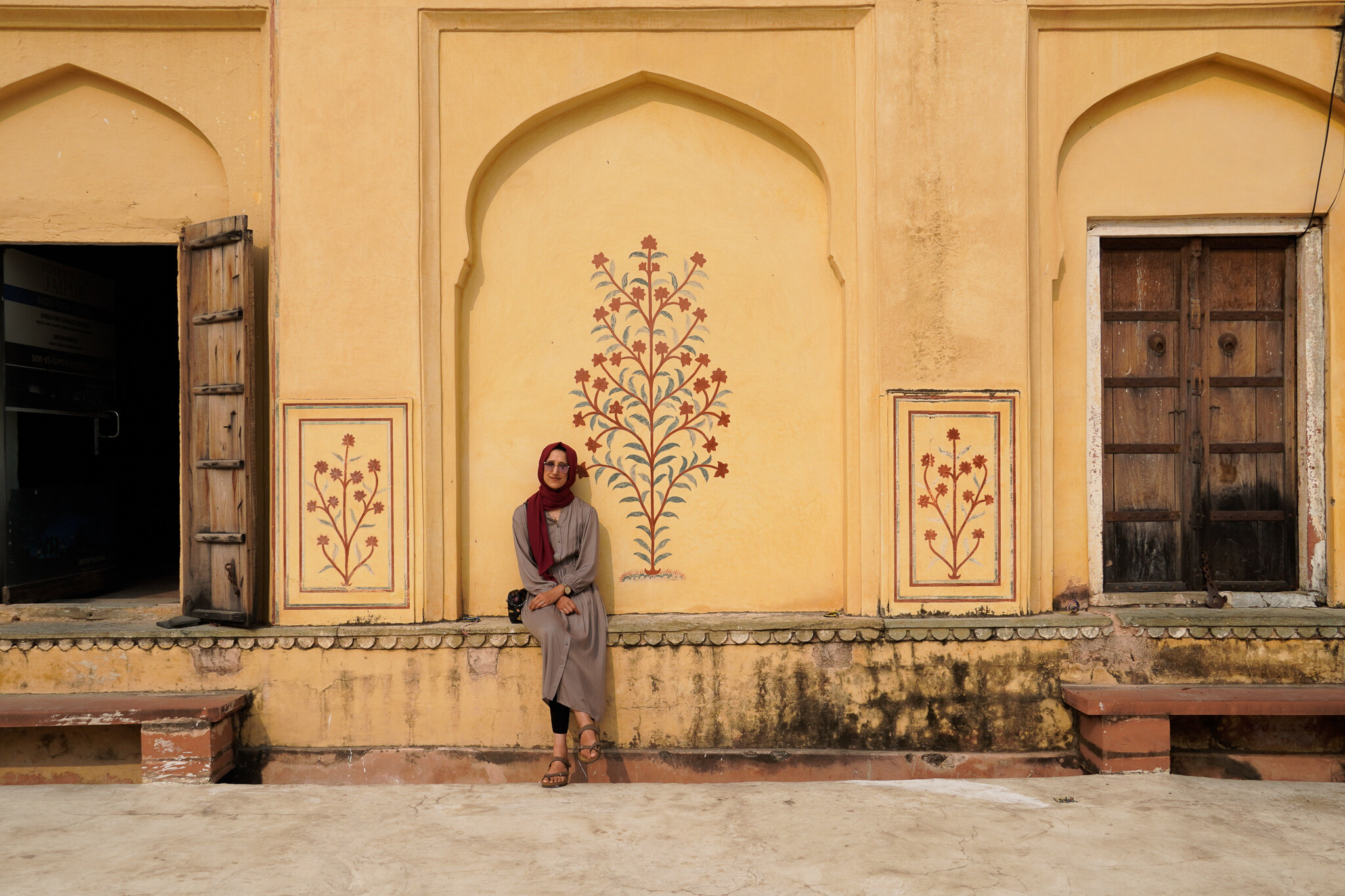
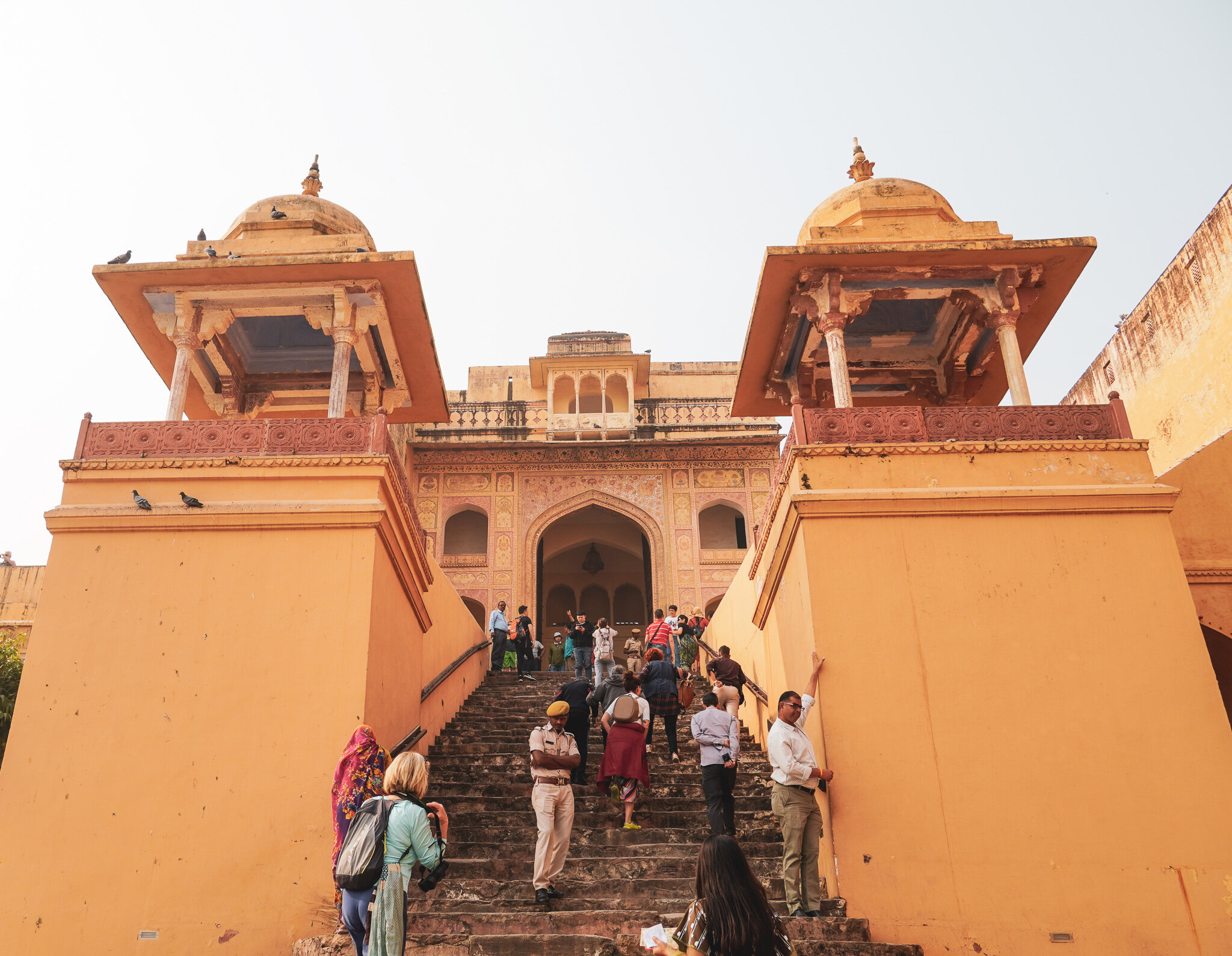
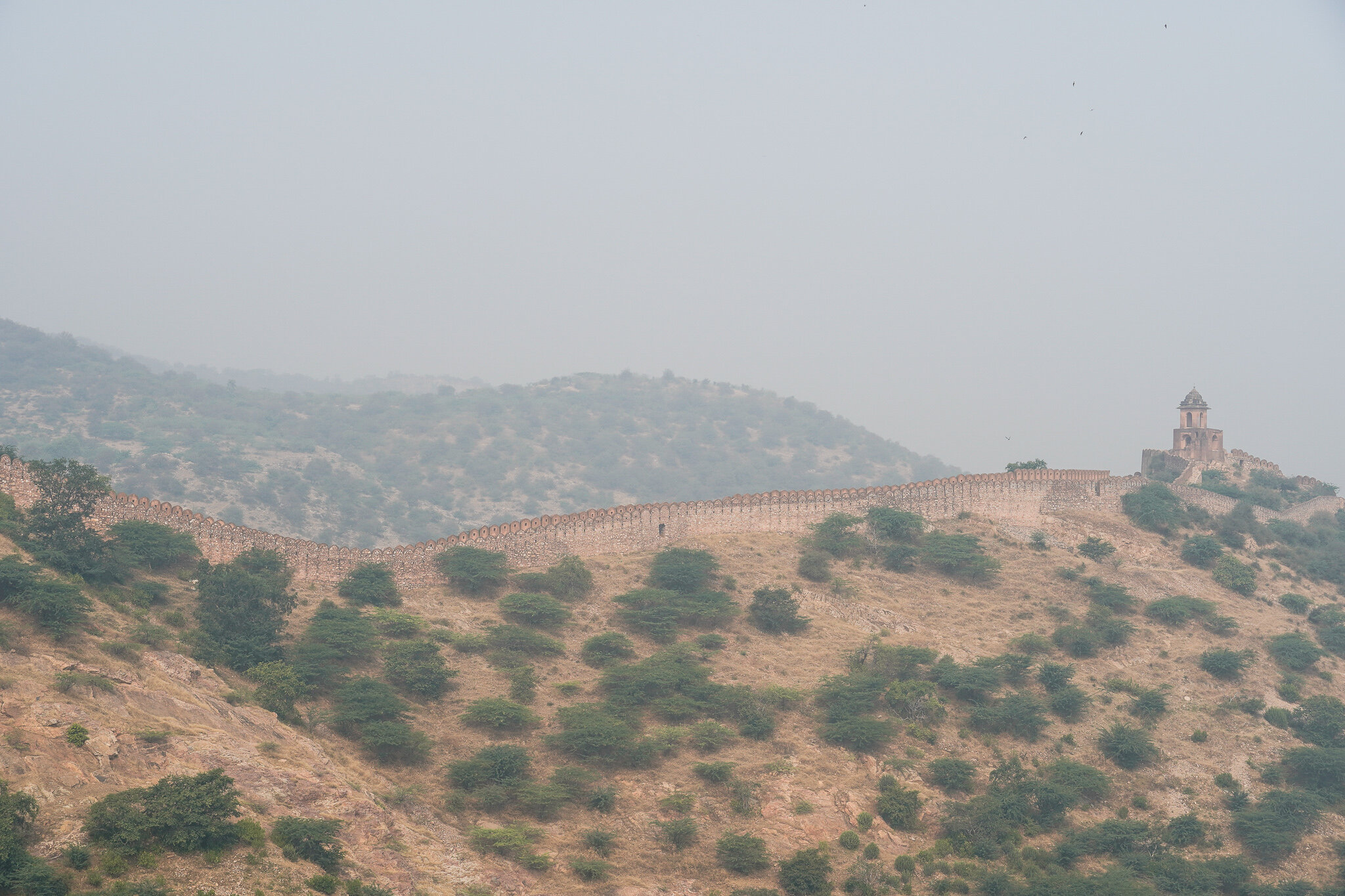
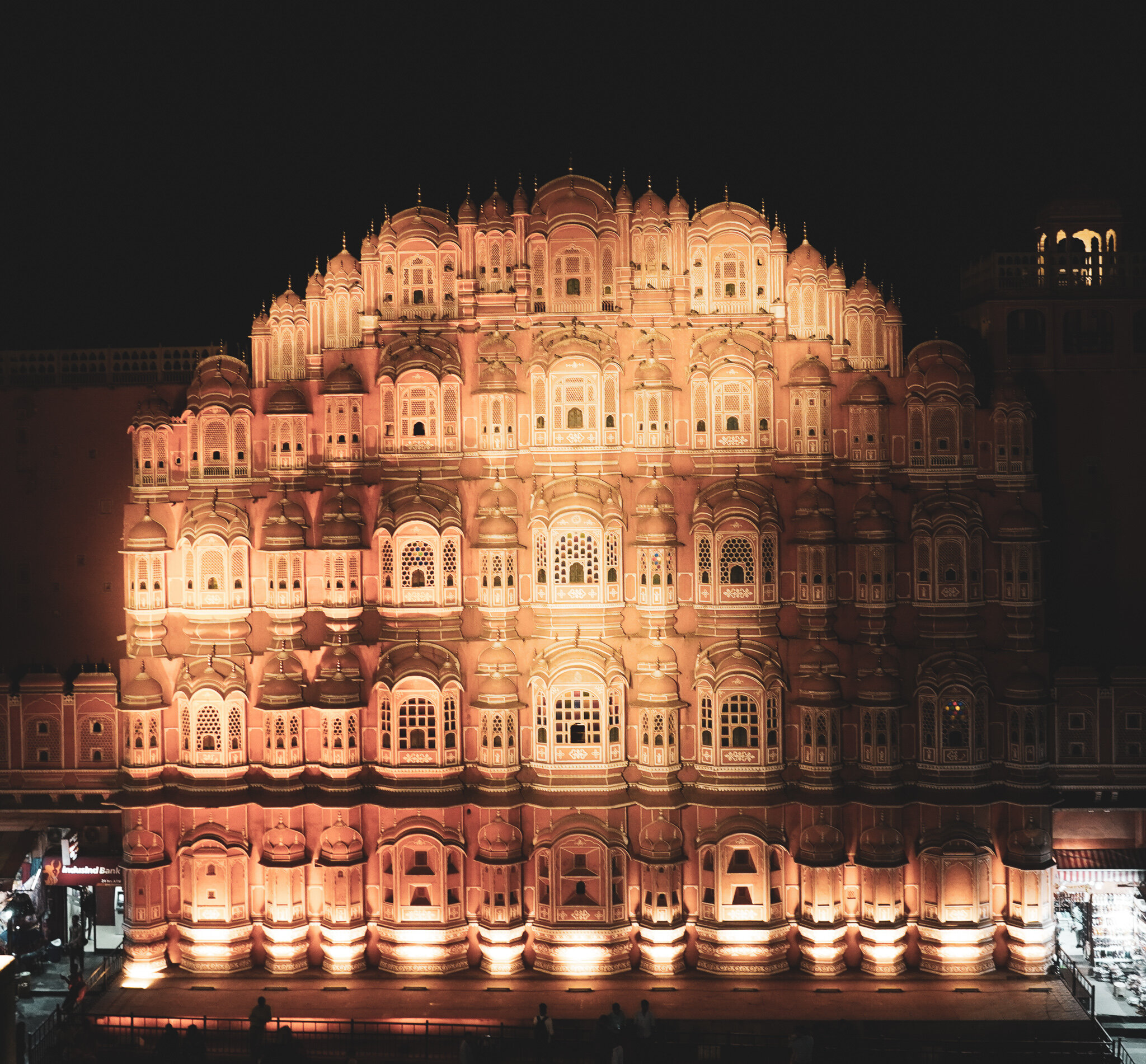
As it gets to sunset, walk for 10 minutes towards the Hawa Mahal, a palace built in 1799 by Maharaja Sawai Pratap Singh. It has a magnificent facade with 953 lattice type windows to allow the royal ladies to watch out onto the road without being seen - this is a common feature in many of the palaces in Rajasthan, known as the ‘Purdah’ system.
9am - 4:30pm. Closed on Sundays
50Rs for adults
The palace will be closed at this time (you can go back the next day), but it will be lit up and it is worth going to see it at night. You’ll also get great rooftop views (and dinner) at the Tattoo Cafe and Lounge which is directly opposite.
Note: to sit at the tables with the best views, there is a minimum spend of 1000Rs.
Next morning, you’ll be picked up by your driver to start the day of sightseeing in Jaipur. Make sure you take a snack with you for between sites.
First stop will be the Amber Fort, just a 20 minute drive from Jaipur. But on the way you will stop at the Jal Mahal, a water palace in the middle of Sagar Lake. Unfortunately it’s not accessible anymore (apparently it is being converted into a fancy restaurant but we aren’t totally sure). It’s definitely worth stopping to take photos because you can see great reflection of the 1 storey that’s visible above the water (there’s 4 storeys under the water!).
Then you’ll get back on the road to Amber Fort. The fort is also considered a palace and sits on a hilltop in Amer. As you drive towards it you’ll see all its magnificence, with large yellowish-pink coloured sandstone walls overlooking Maota Lake. As you get closer, you’ll see lots of elephants taking tourists up the hill to the fort. Although this looks attractive, it’s recommended not to take part in this as there have been reports of abuse to the elephants. Instead, you can get dropped off a short distance from the fortress.
It’s believed that Amber fort was originally built by Raja Man Singh, the Kachawa King of Amber, in 967CE and later expanded and further developed into the palace it is by Mirza Raja Jai Singh and Sawai Jai Singh in the next couple of centuries until the Kachawas moved their capital to Jaipur in 1727.
There are four levels to the palace, each with their own courtyard and entrance gateway. You’ll enter from Suraj Pol (Sun Gate) which leads to the first courtyard known as Jaleb Chowk, which is where the tickets are sold. There is a vast amount to see in this palace including a mirror palace, the women’s quarters, all the courtyards and there might be a small dance performance too.
8am to 5:30pm daily
500Rs for adults
Spend 2 hours
The next site will be the Jantar Mantar Observatory built between 1734 and 1730 by Maharajah Sawaii Jai Singh II. India actually has 5 observatories, and Jaipur is home to the largest of them. It holds 19 various large scale astronomical instruments such as sundials to provide accurate measurements of time. We tested a few out and were amazed to see how precise they are! It’s best to visit around midday so that the sun is directly above, making it easier to see shadows on the sundials.
9am-5pm
200Rs for adults
Spend 30 minutes
You can then walk across to the City Palace which is only a few minutes away. Be sure to purchase the composite ticket which includes the museum and the palace grounds. The entry fee is expensive but the grounds are worth it. Also, if you’re hungry at this point, the composite ticket also includes tea/coffee and biscuits right before you enter the palace rooms. And the biscuits are endless so don’t feel shy!
The palace was commissioned by Sawai Jai Singh and started construction in the 17th century in preparation to move the capital from Amer to Jaipur. It was designed by Vidyadhar Bhattacharya and Samuel Swinton Jacob which meant the style included both a Mughal and European influence. Again there are many areas to explore including: Mubarak Mahal, The Armory, Diwan-i-Khas, Diwan-i-Am Art Gallery, Pitam Niwas Chowk & Chandra Mahal (housing the four gates representing each season).

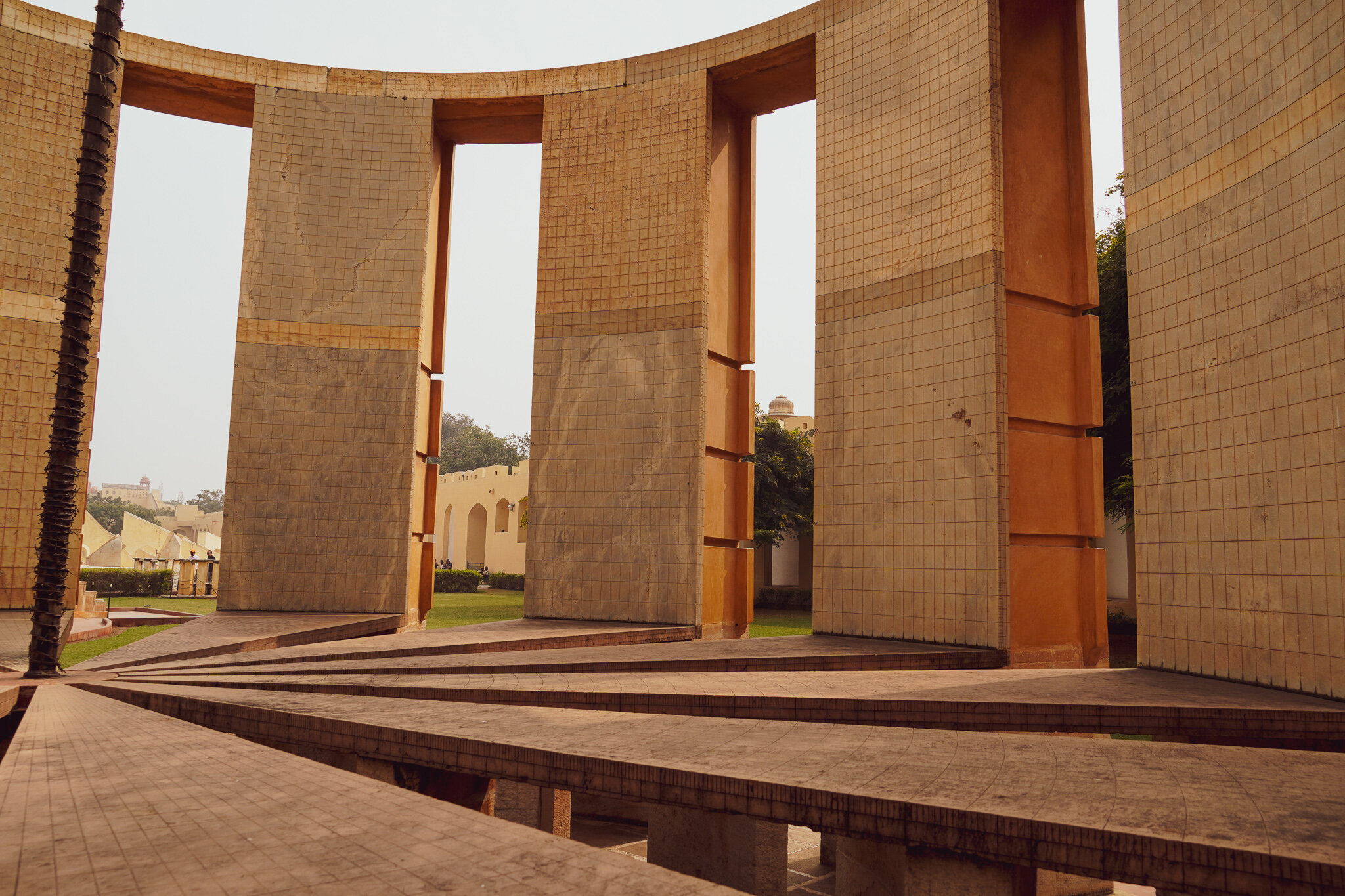
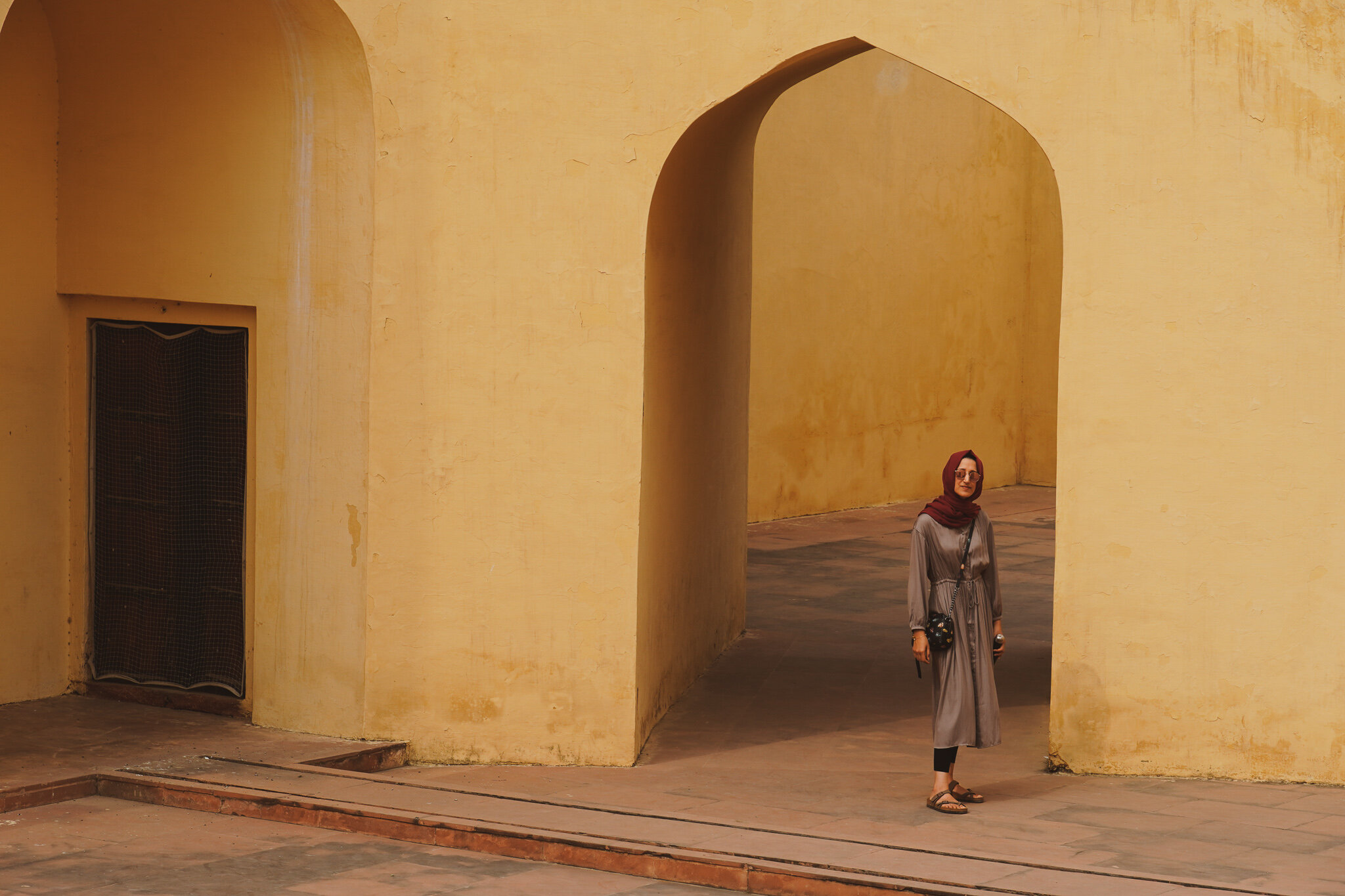
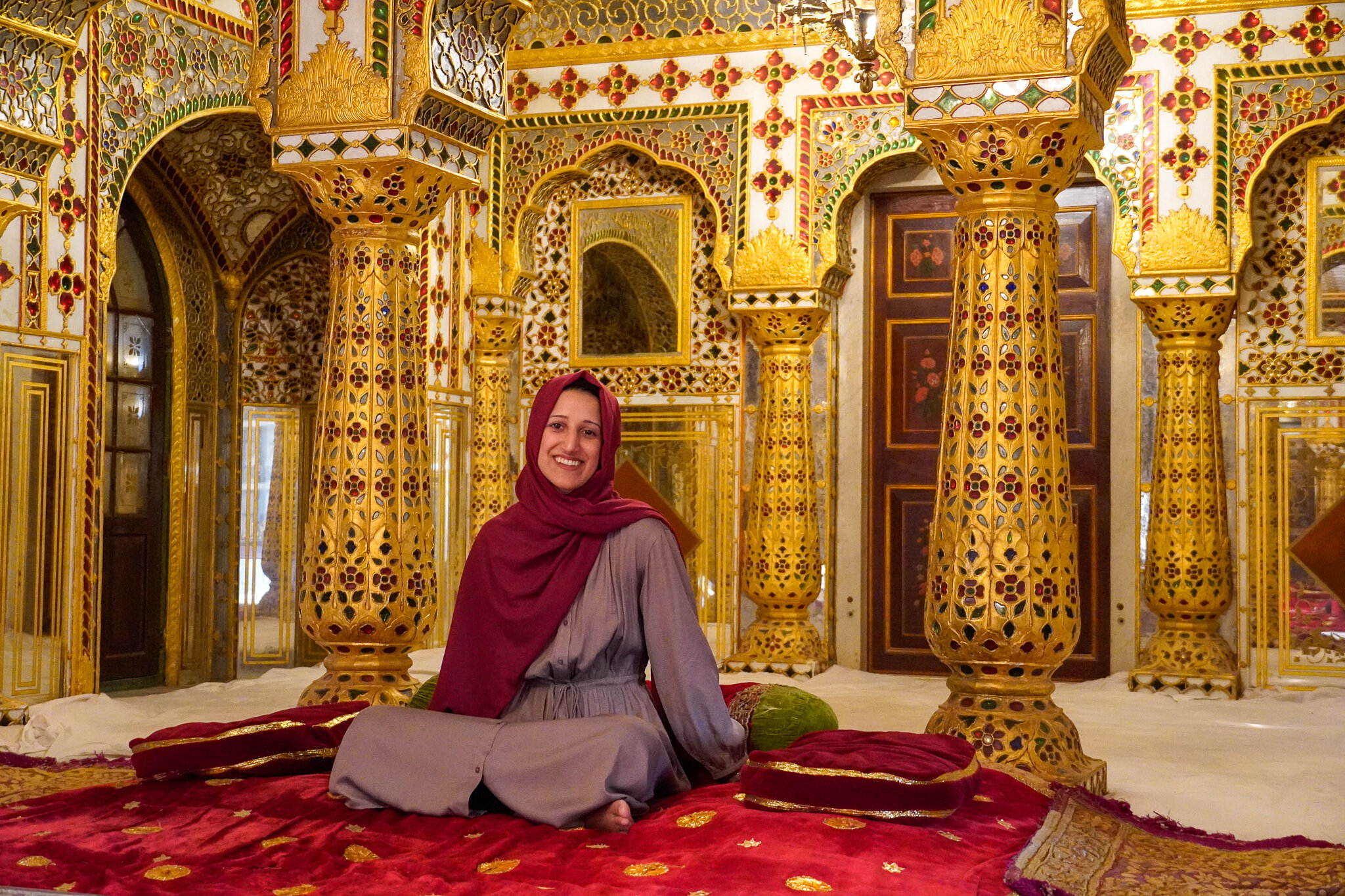


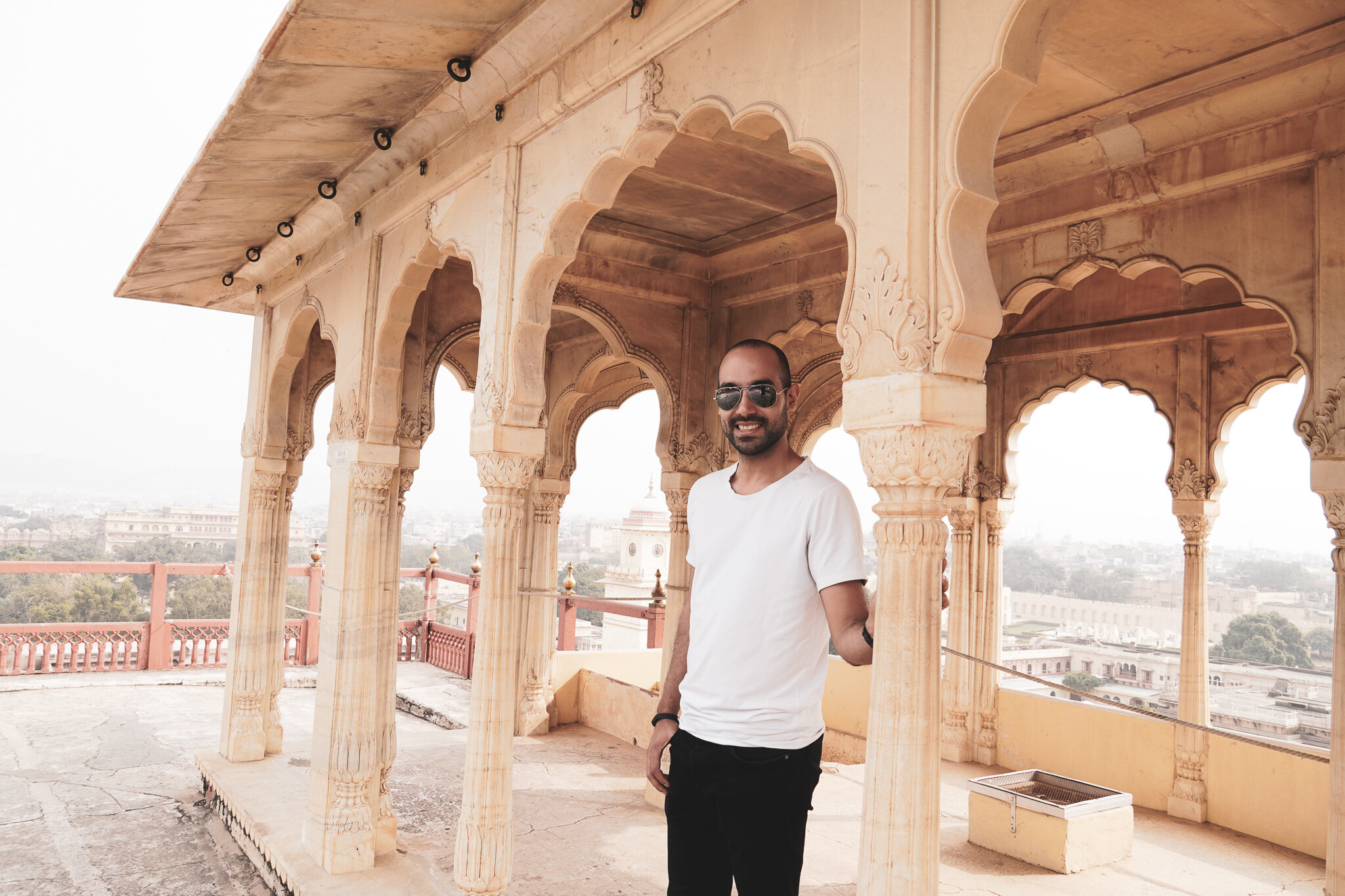
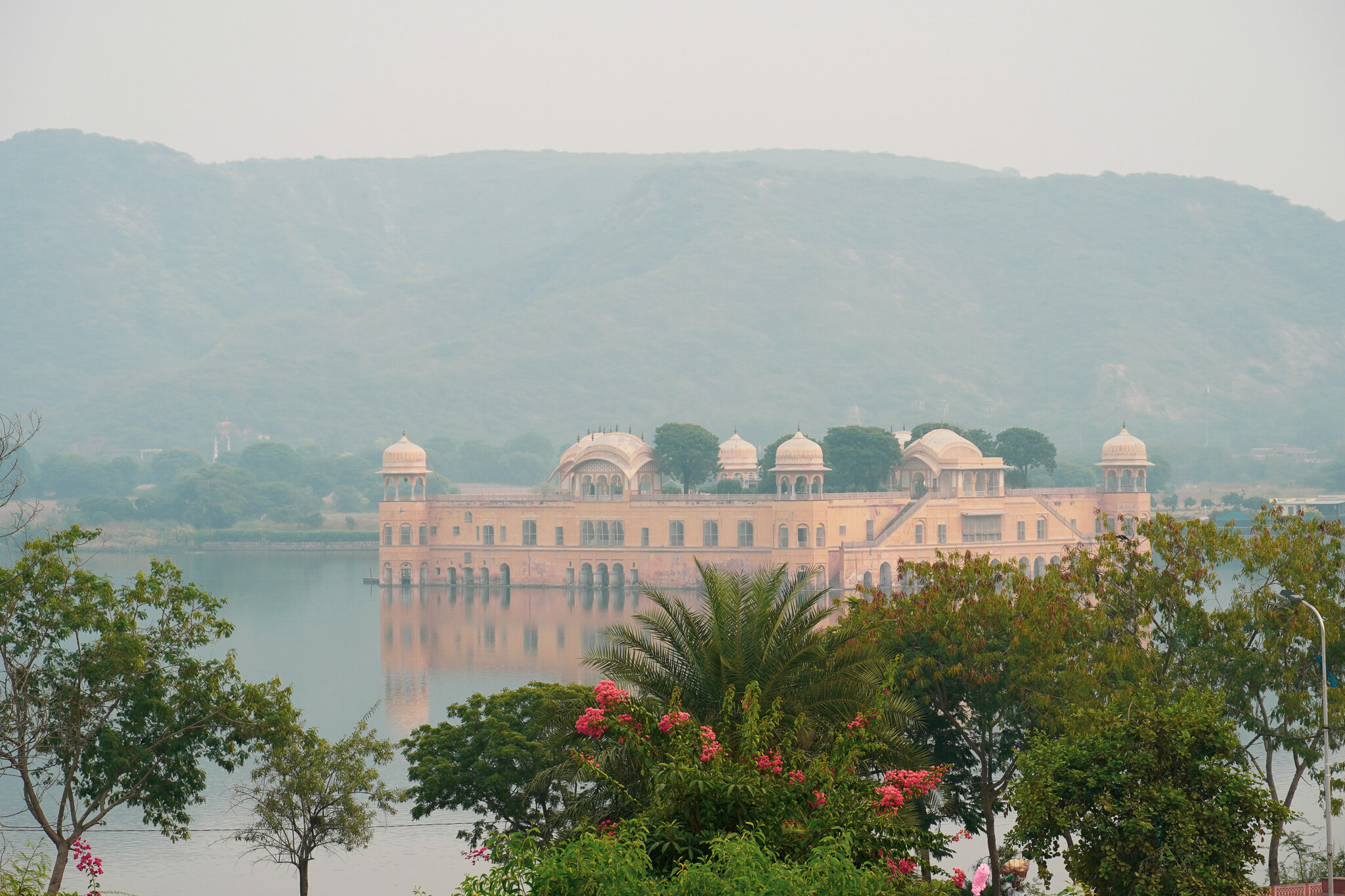
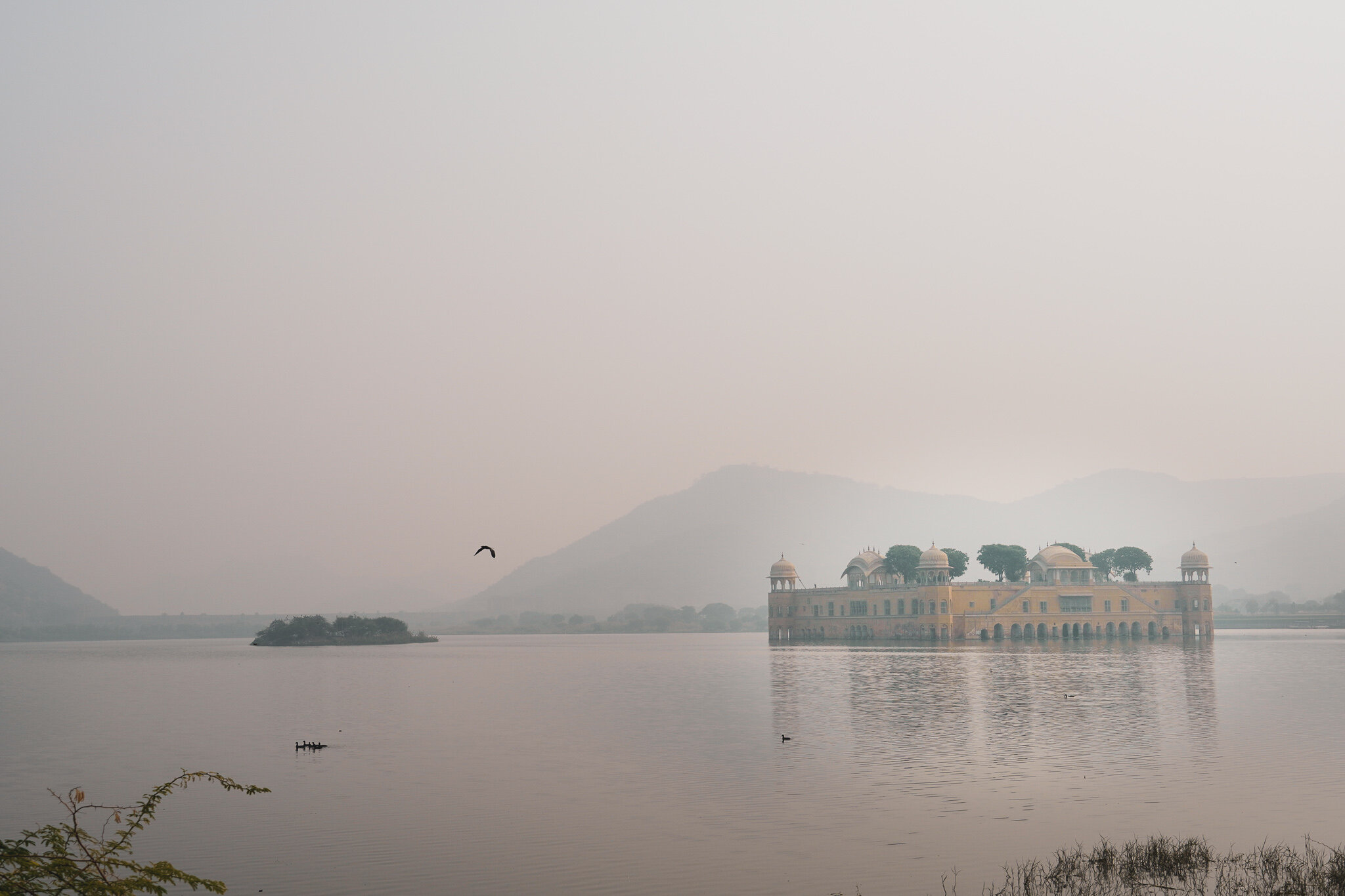
There are also various private rooms you view (using the most old-school lift!), our favourite of which includes Shobha Nivas (decorated in gold and coloured glass - used for prayers during Diwali and Holi) and Chavi Nivas (a blue and white room - used during the monsoon). In Shobha Nivas, you’re allowed to sit on the plush velvet red cushions, so make the most of the experience and take a moment to feel like royalty! If you can believe it, the City Palace is now also on AirBnB.
9:30am - 5pm
700Rs for adults (composite ticket)
Spend 1.5 hours
Final stop will be a late lunch, our guide suggested a place but neither of us can remember what it was called so it definitely wasn’t memorable. Once you’ve had your fill, somewhere hopefully better than where we ate, you can have a few hours break at your hotel’s pool and then head back into the city walls of Jaipur for one of the best meals we had in India. Go to Baradari which is a restaurant in the City Palace. Don’t worry, it’s not super expensive! Make sure you order the Laal Maas (meat curry), it’s a speciality in Jaipur and it is amazing!
Day 4-5: Udaipur (2 nights)
Udaipur often doesn’t make it on to itineraries with many ending their Indian adventure in Jaipur, but we had a great time there. Udaipur is known as one of the most romantic cities of Rajasthan because there are plenty of lakes to walk around, explore and enjoy. It’s a busy city and the street food was fantastic.
Start the day early in Jaipur as the drive to Udaipur is about 7 hours (including a lunch stop). You could fly there but between the time spent at airports (and the price), we found it more effective and easier to just drive.
Once you’ve checked in and freshened up, you’ll definitely want dinner by this point. We’d recommend going to the Bombay Market at the edge of Fateh Sagar Lake - this market did not disappoint. Try the Pav Bhaji, Momos and Chola Bhatura at Vinod Fast Food stall (there are a few Vinods so we’d recommend the one with a rainbow sign). This is a pretty lively market and you can spend some time enjoying the place with a Kulhad coffee (a sweet foamy coffee in a clay cup, naturally) in hand.
If you’re still up for it, get an uber or tuktuk to the Sukhadiya Circle roundabout in Panchwati. There’s another local street food market here and it’s always buzzing. Don’t leave without trying the Kesar Pista (Safron-Pistashio) Faluda ice cream from Prince Faluda Ice Cream - it was so good we came back the next night for more!
The next day will be full of site seeing so make sure to pack your snacks! Your first stop will be Jagdish Temple, a Hindu place of worship in the Indo-Aryan style, built in 1651 by Maharana Jagat Singh. It’s the largest temple in Udaipur and was built in dedication to Lord Vishnu.
4:15am - 1pm and 5:15pm to 8pm daily
No admission fee
Spend 30 minutes
From here it’s a short walk (10 minutes) to the City Palace which sits along the banks of the Lake Pichola. The palace complex was built over a period of 400 years by the Mewar dynasty (it started by Udai Singh II). You’ll be able to visit the City Palace Museum which sits within the complex. But before entering, there is a row of shops within the complex which house Kashmiri fashion. You can get items of clothing made within 3-4 hours and literally delivered to you that evening at your hotel! Siraj got a linen shirt made and the fit is perfect. You won’t be exiting this way so it’s best to browse here first before entering the museum.
The museum houses multiple mirror clad rooms, courtyards and balconies to explore where you’ll get great views out across Udaipur too so take advantage of this.
9:30am - 5:30pm
250Rs for adults
Spend 2 hours
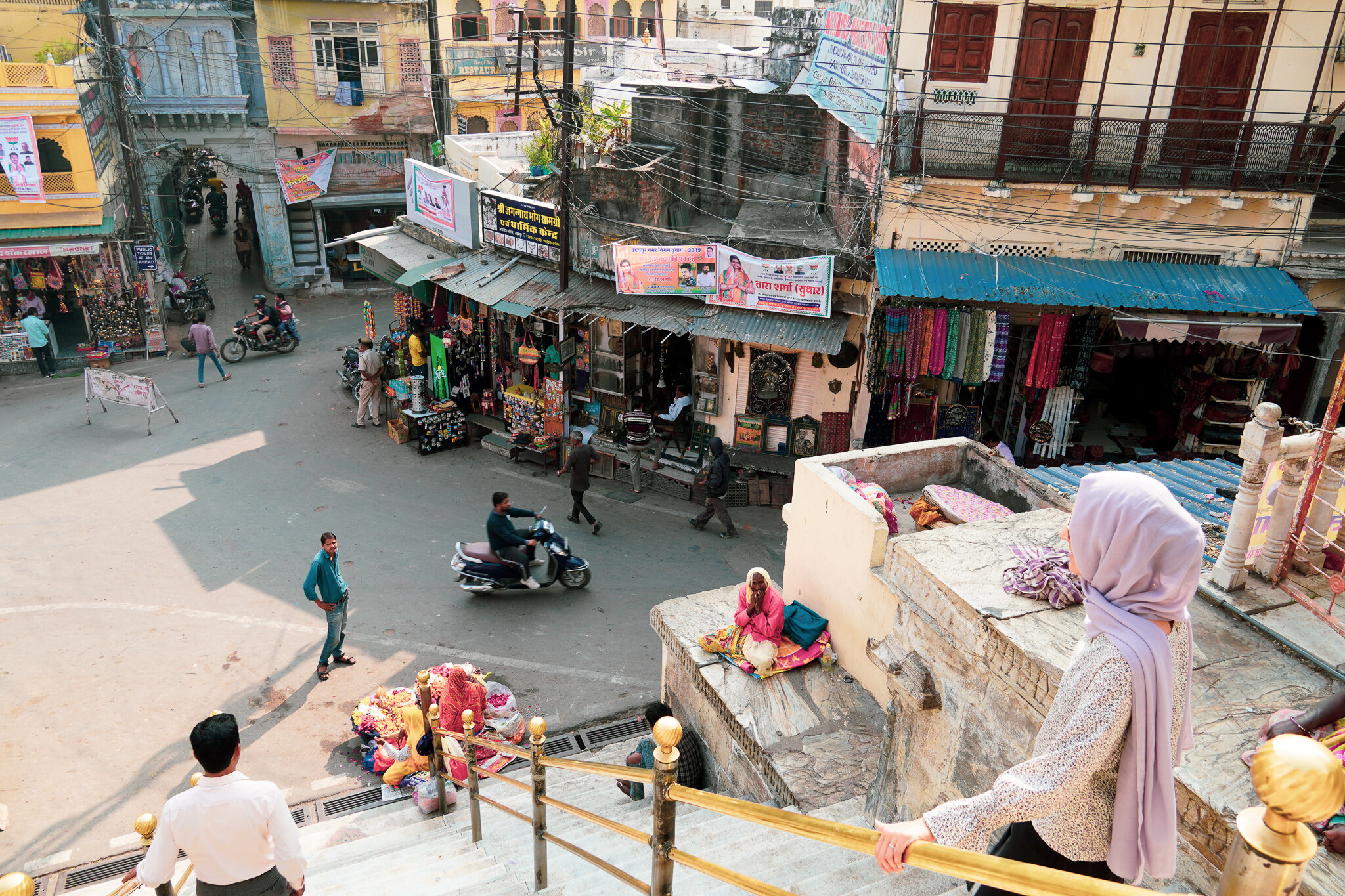
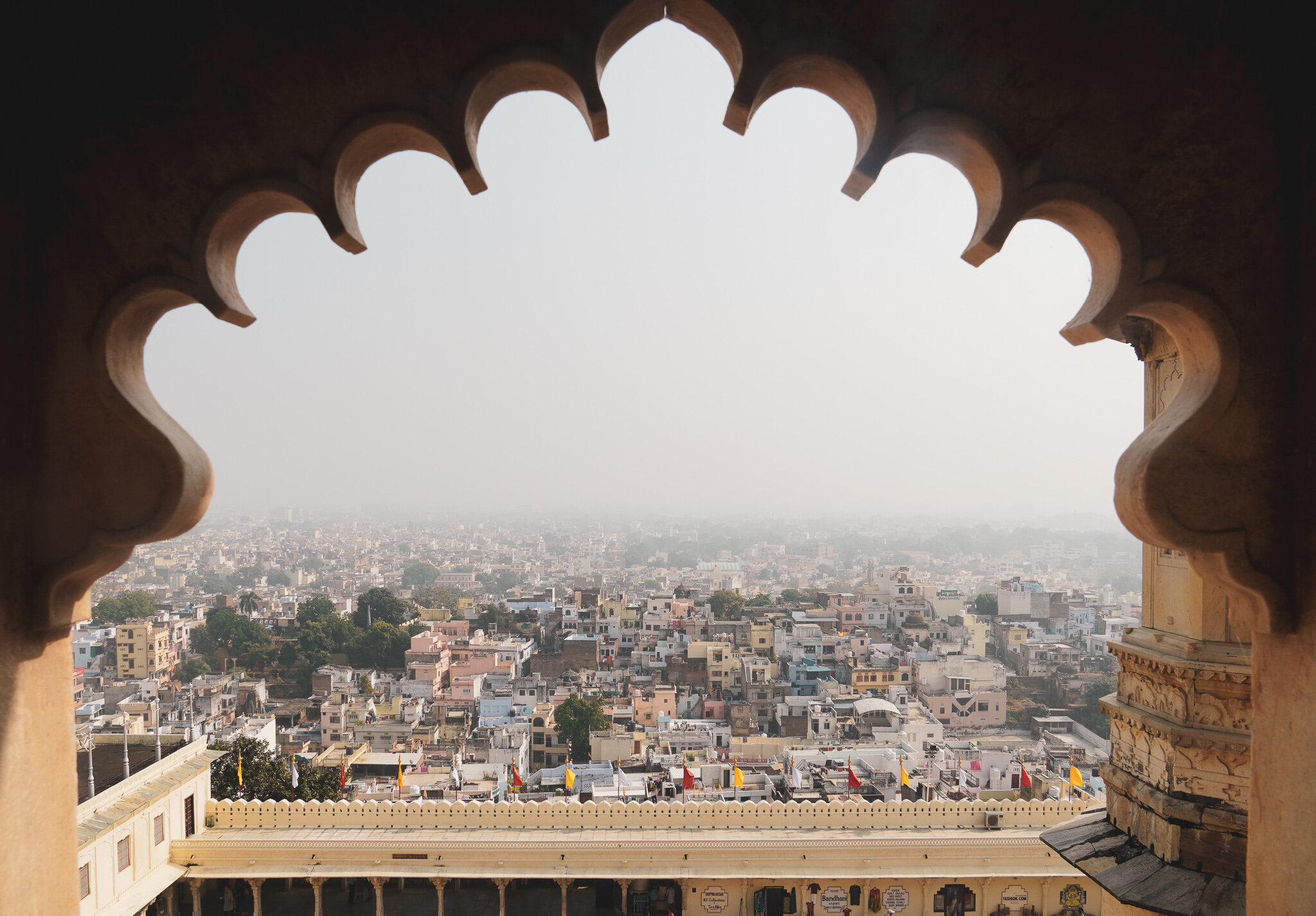
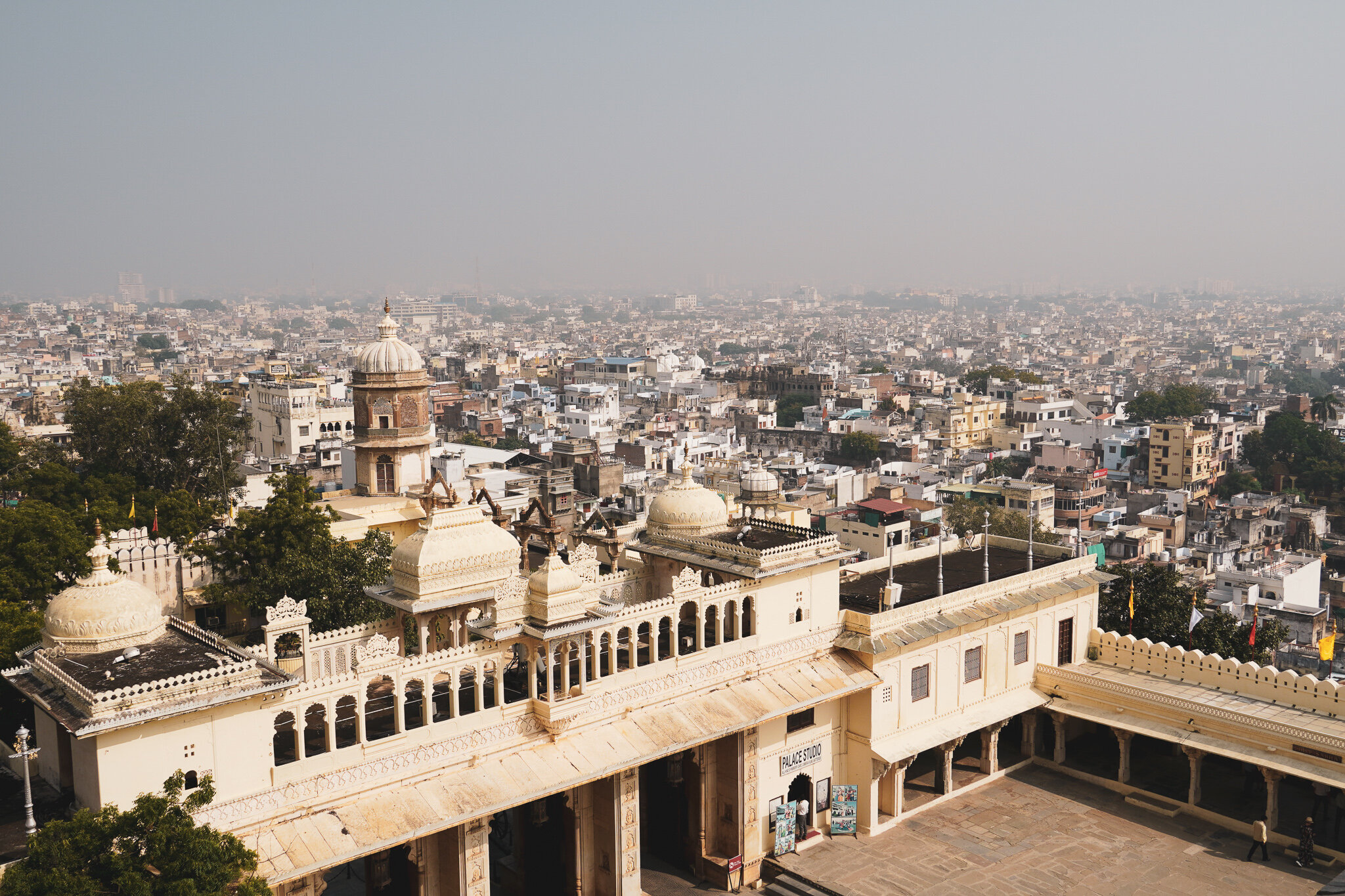
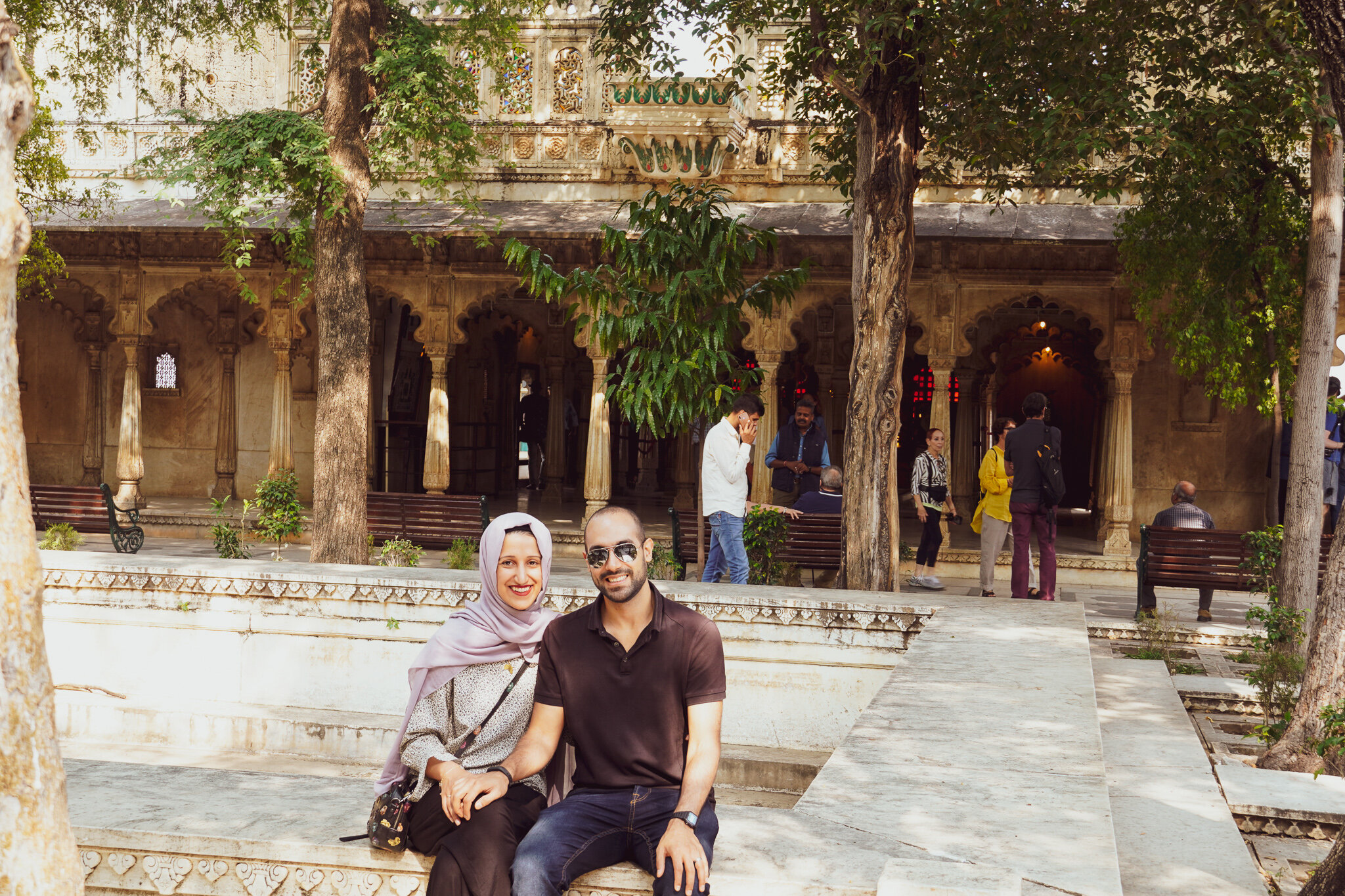
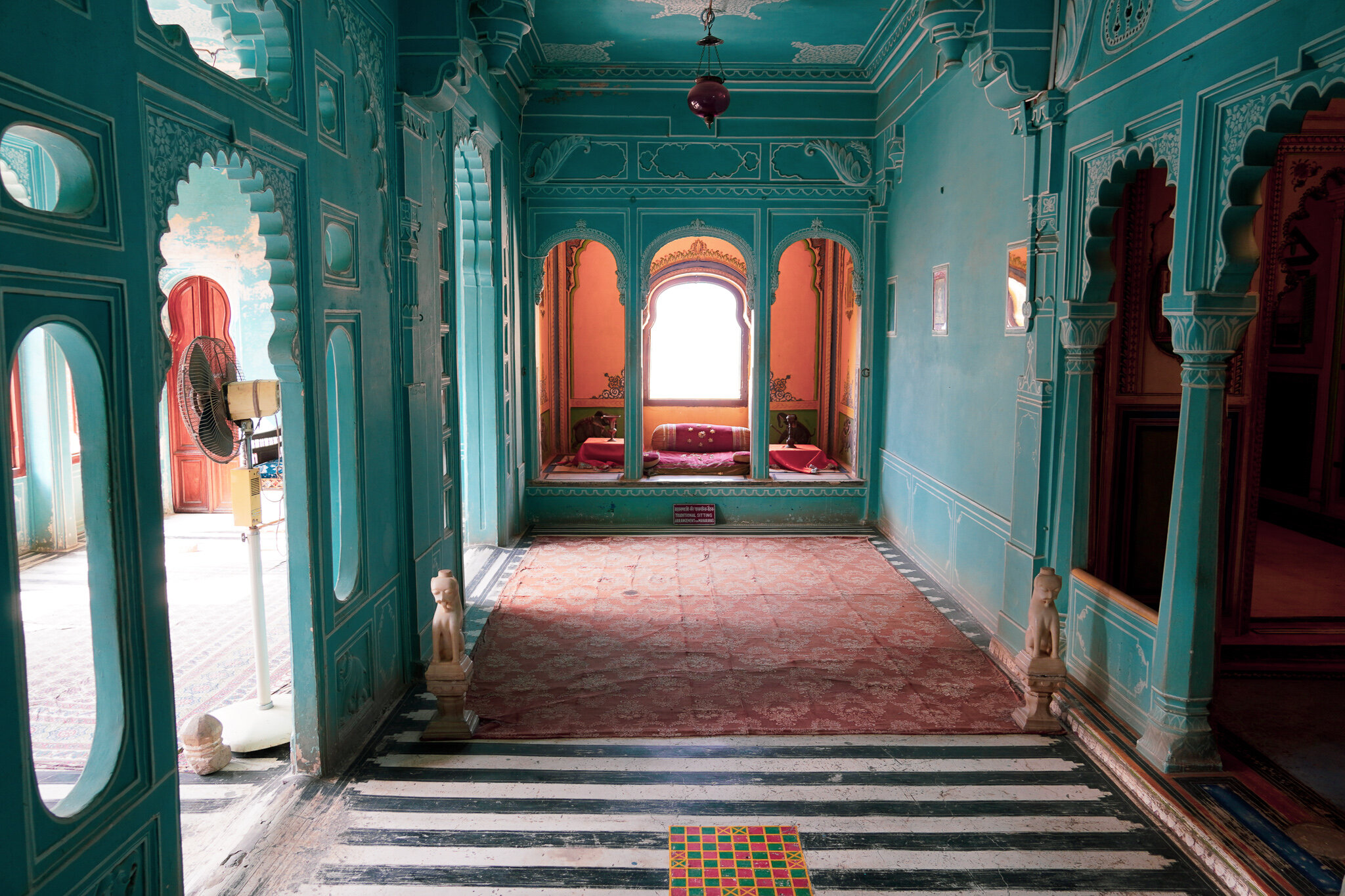
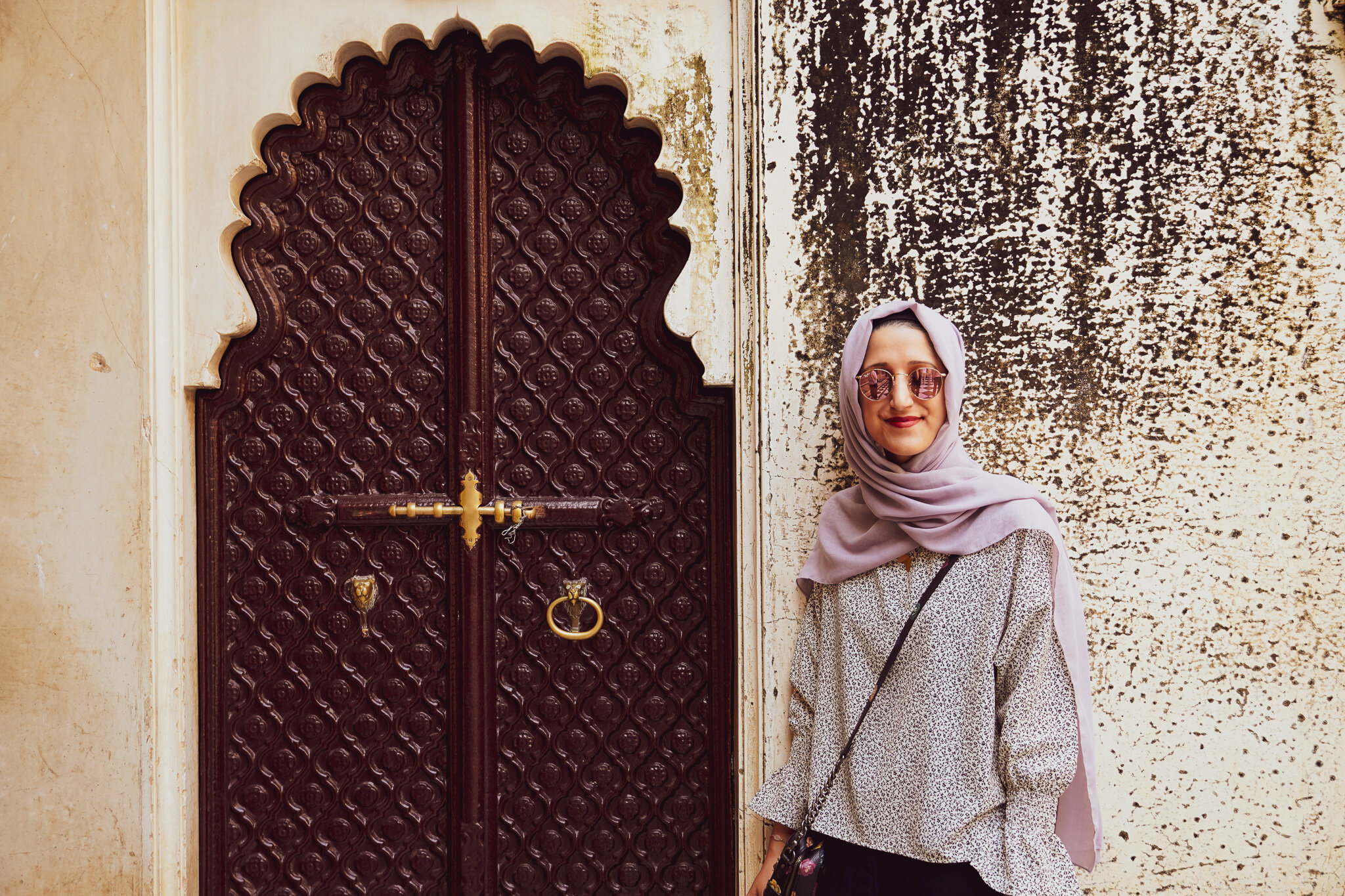

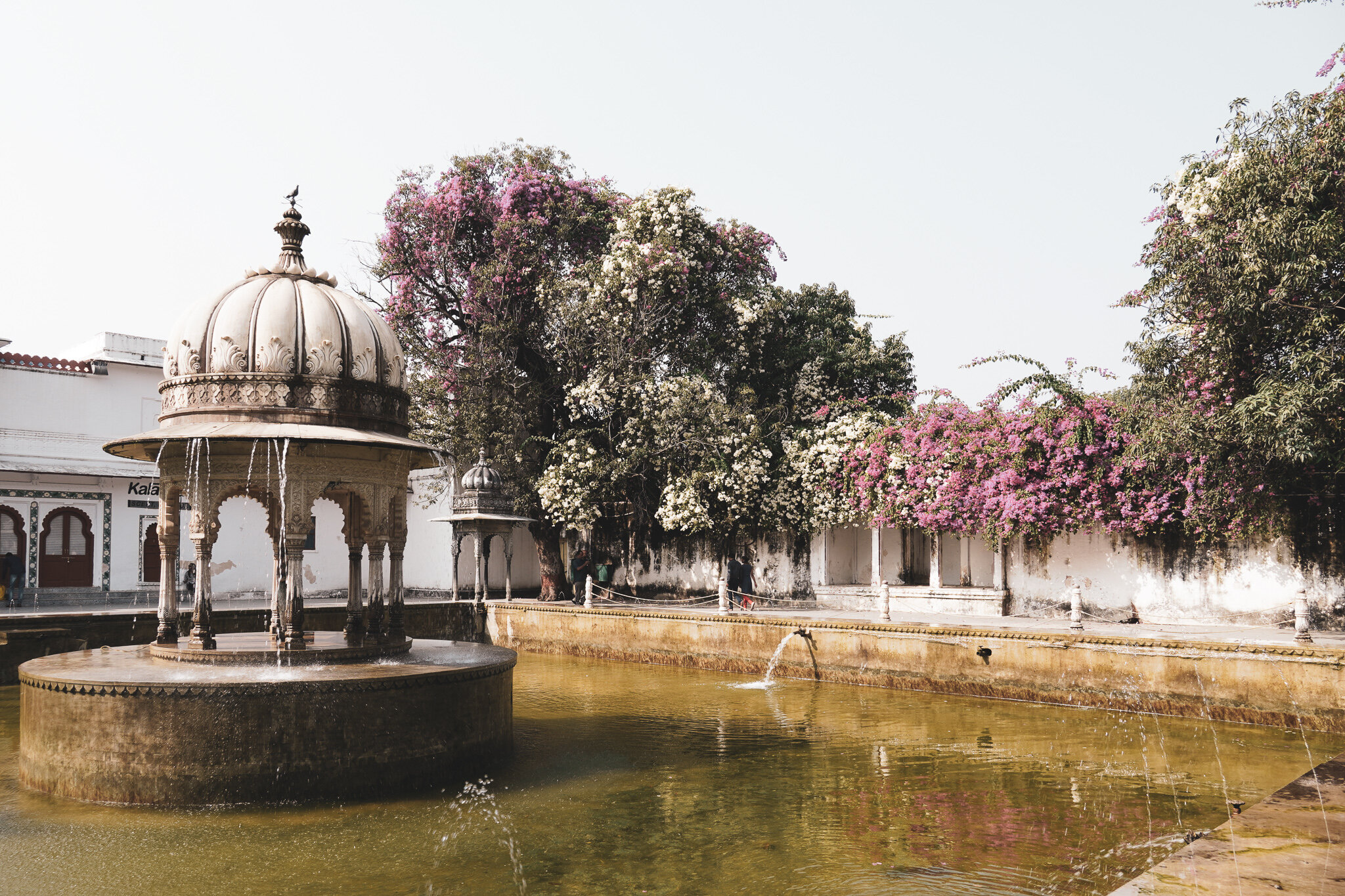



Upon exiting the palace, you can purchase a ticket near Lake Pichola to take a short boat ride to Jagmandir, a small palace completed in 1652 on an island in the middle of the lake. It’s a stunning white marble structure (including the Gul Mahal, Jag Mandir and the Bara Patharon ka Mahal) amidst beautiful grounds and gardens which you can explore and have a small bite to eat at too (we had a pesto pasta and recommend it if you’re in the mood for western cuisine). You can also visit the museum which has displays of the Mewar dynasty.
You’ll also see the Lake Palace while on the boat ride. Unfortunately you can’t visit it unless you stay at the hotel there.
10am - 6pm
450Rs for adults. After 3pm this increases to 700Rs
10-15 minute boat ride. Spend 30 minutes to 1 hour at Jagmandir. Boats depart every 20 minutes or so.
The final stop will be the Saheliyon Ki Bari aka the Gardens of the Maids of Honor which is a 15 minute drive from the City Palace. The gardens were commissioned by the King for his Queen and her 48 maids to stroll and relax in. It includes lotus pools and marble pavilions and multiple ornate fountains with impressive water mechanisms.
9am - 7pm
50Rs for adults
Spend 30 minutes
In the late afternoon you can then explore the markets of Udaipur such as Hathi Pol Bazaar, Bada Bazar and Mochiwada Bazaar. You’ll pass lots of small stalls making Indian sweets so you can pick up some Jalebi and Gulab Jamun while you walk. Don’t forget to bargain!
For dinner, head back to the street food area in Panchwati and try some masala dosa at the South Indian stall and maybe try another flavoured Faluda!
You can of course spend longer in Udaipur, getting lost in the city, but we decided to end our Rajasthan trip here before heading to Mumbai. Five days may feel like a short trip for three cities, but we felt it was the perfect time to see the main sites, get lost in the culture and explore the areas. You may want to add on one extra day if you plan to do some shopping!


